Heather Cline- ‘Viewfinder’
‘Viewfinder’ is a collaborative project between myself, Heather Cline, and the Nature Conservancy of Canada. I am creating artwork inspired by viewing the landscape through a conservation lens, walking the land with staff and stakeholders of the Nature Conservancy of Canada.
The is a muti media project incorporating largescale paintings, audio works and video that offer an immersive experience of the land. This artwork is the evolutional of a series of smaller projects exploring the issue of land use on the prairies.
As I was grappling with how to understand the impact of settlement and the agricultural complex on the land, I recognized that I had to find a meaningful way to explore the issue. One of the main reasons I approached Nature Conservancy of Canada was their focus not just on conservation but on a collaborative approach to understanding human interaction with our environment. I view the understanding of land use and how this impacts our society as an important aspect of reconciliation. NCC has acknowledged the impact of a colonial approach to conservation and has committed to use its capacity, expertise and influence to act as an ally in support of Indigenous-led conservation projects and as a partner in joint initiatives.
An important aspect of the Viewfinder exhibition was to create a space that will inspire discussion about conservation land use with as broad a community as possible. A space for gathering and bringing together diverse stakeholders to have meaningful conversation about our past, present and future approaches to land management. The final aspect of the project is public engagement. It is my intention, in collaboration with NCC and each exhibition site, to host several live events in the exhibition space at each venue.
The initial project fieldwork for ‘Viewfinder’ consists of a series of one-on-one encounters with each project participant in their environment. I am compiling ‘Field Notes’ for the project that consist of visual documentation (land based and aerial) and audio recording. The goal is to have meaningful exchanges on the land that shift how I view the landscape. These encounters are being translated into large-scale paintings that act as portraits of each of the project’s key participants. These artworks capture the locations that are important to each person from the aerial perspective combined with land based subject matter from other viewpoints. The paintings will be enhanced by the edition of a video based on walking through the different project sites and an archive of short explanatory videos featuring the activities of project participants on the land.
In June of 2023 I walked the land for three days with Krista Ellingson, MSc, Pag, Natural Areas Manager- Working Landscapes NCC. We visited an area in Southern Saskatchewan managed by the Val Marie Grazing Corp who are working with the NCC on sustainable agricultural practice to protect natural grasslands. I then returned to conduct an aerial survey of the area with private Pilot David Stanchuk and Krista Ellingson. In the summer of 2024, I visited areas of the Aspen Forest in the Meeting Lake area with Sarah Bradley (she/her) Stewardship Coordinator - Central Saskatchewan, interacting with landowners and citizen scientists. These experiences were documented through audio/visual collection and will become part of the ‘Viewfinder’ project. Field work will continue in Spring 2025. The ‘Viewfinder’ exhibition will begin touring in 2026, starting at the Art Gallery of Swift Current and the Moose Jaw Museum and Art Gallery.
Brief Exhibition Description
The exhibition will consist of a series of paintings on panel supported by audio work and a video archive. The paintings will consist of fairly large-scale works, featuring aerial views of the landscape. The audio soundscapes will be delivered via motion activated parabolic speakers housed in ‘Sky Lanterns’. An image-based video projection will feature shorts of participants walking each site.
All of the paintings are created through the layering and carving of Acrylic on Birch Ply Cradle panels with a depth of 1 3⁄4”. The panels hang flush to the wall using a method of eye-screws on heavy duty picture hanging hooks. This enhances the effect of the paintings as windows into the landscape. The birch edges of the frames are sanded to a clean finish and sealed with wax, a simple clean framing system that allows the images to dominate.
Nature Conservancy of Canada
The Nature Conservancy of Canada (NCC) is Canada's leading national land conservation organization. In Saskatchewan, NCC has secured more than 170 properties and has helped to conserve over 198,219 hectares of ecologically significant land and water in Saskatchewan.
For more information on the work NCC is doing in Saskatchewan visit, https://www.natureconservancy.ca/en/where-we-work/saskatchewan/
For more information on the work NCC is doing across Canada through Indigenous Partnerships visit, https://www.natureconservancy.ca/assets/documents/nat/NCC-Indigenous-Pathways-EN-digital.pdf
BIO
Heather Cline is a professional visual artist based in Saskatchewan. Cline has a deep interest in public interaction, and has participated in residency programs and community engagement across Canada. Her activities have included setting up a ‘Story Collection’ office from an inner-city store front in Oshawa, Ontario and riding along on combines in rural Manitoba. In her most recent art work she is exploring the radically altered terrain of Western Canada in a series of aerial landscape paintings based on observations from the passenger seat of a Cessna Skyhawk. In the spring of 2023 Cline is started a major collaborative project with the Nature Conservancy of Canada. The goal of this new body of artwork is to explore Western Canadian landscape through a conservation lens. Cline will be working with Nature Conservancy of Canada (NCC) staff, volunteers and stakeholders, exploring some of the important conservation work done by the organization through interaction on the land and in the air.
Cline has her MFA from the University of Saskatchewan and has exhibited in multiple group exhibitions, with solo exhibitions at the Robert McLaughlin Gallery (Oshawa, ON), the Mendel Art Gallery in Saskatoon, and regional exhibition centers throughout Western Canada. Her work can be found in many public and private collections, including the Colart Collection, the Mendel Collection at the Remai Modern and the Saskatchewan Arts Board. Cline has a keen interest in community engagement and art education. In 2014 Cline received the Saskatchewan Lieutenant Governor’s Arts Award: Arts & Learning for her work as the Artist Manager of an innovative distance learning ‘LIVE Arts’ program.


































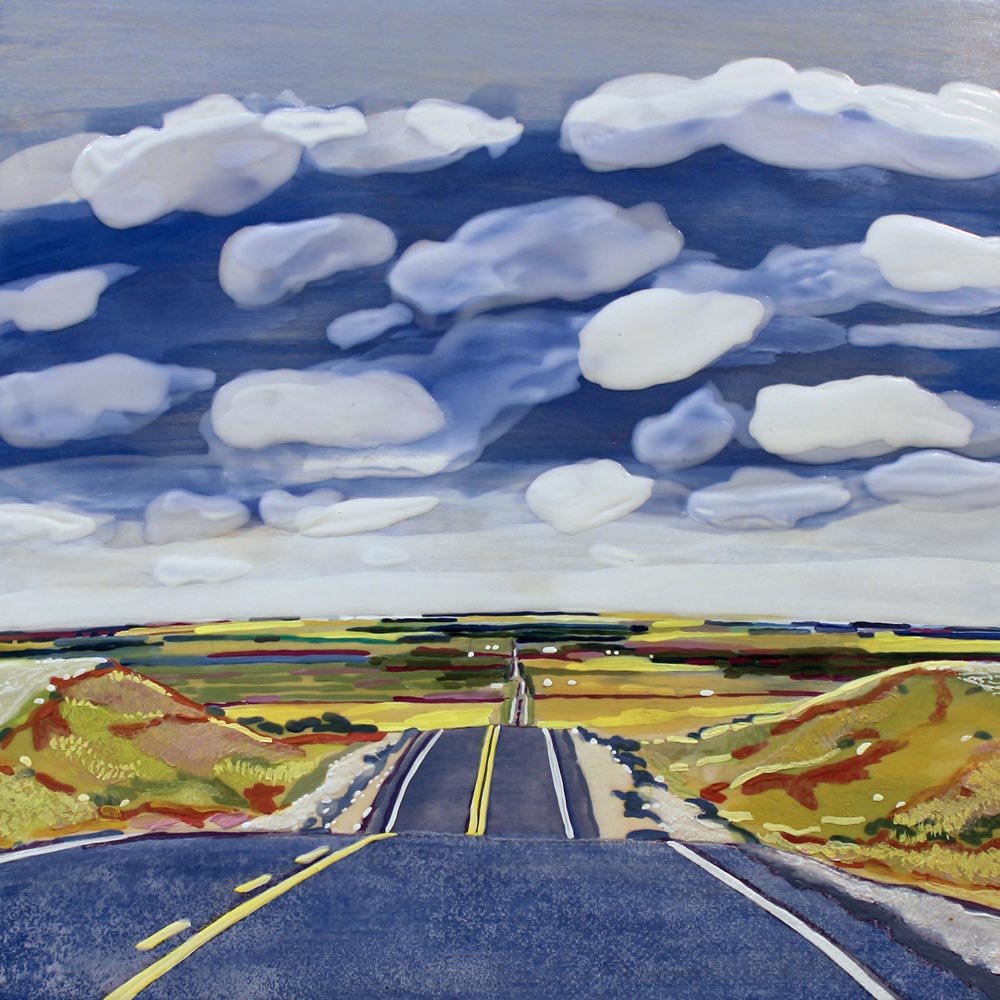

















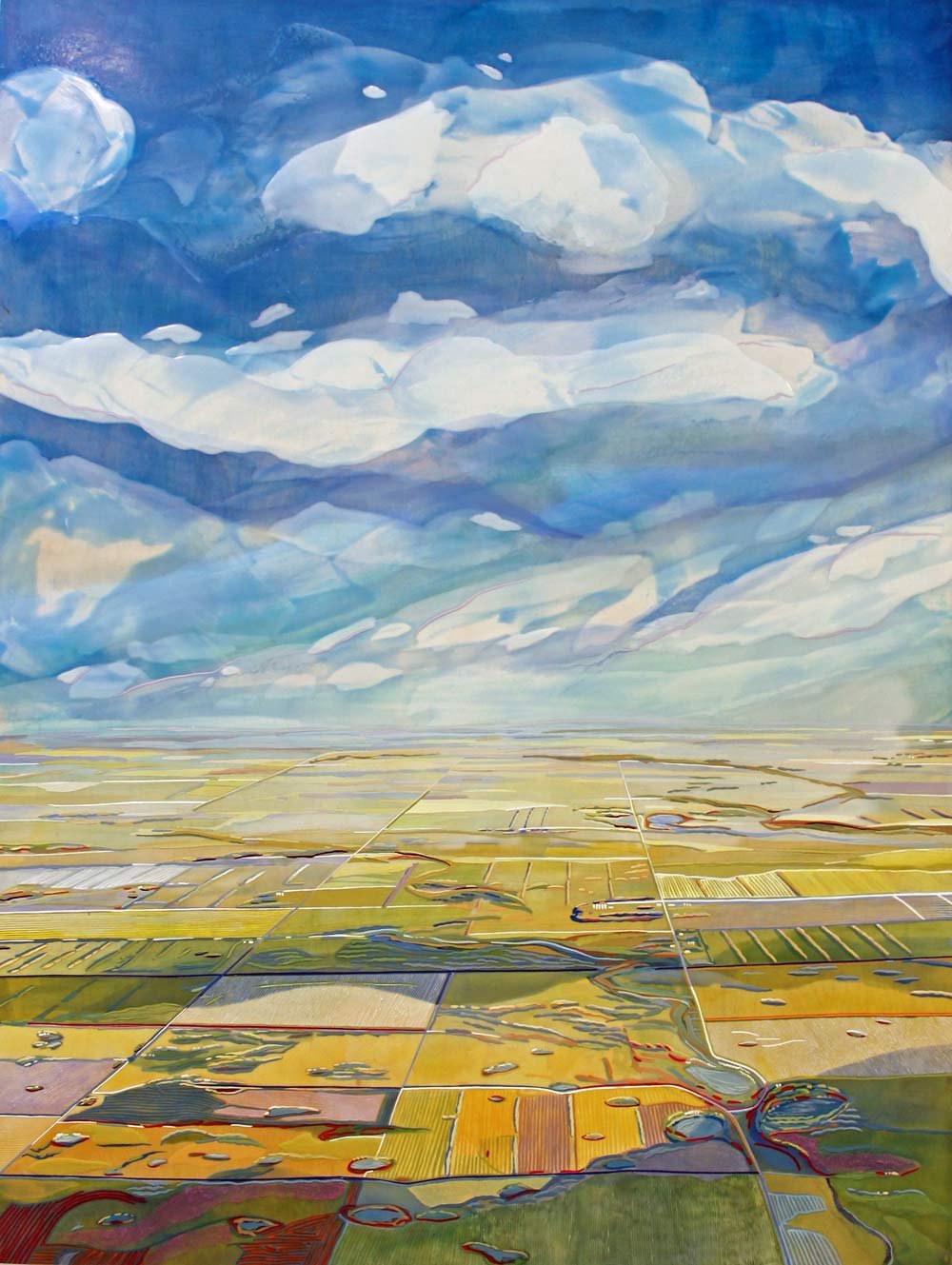




























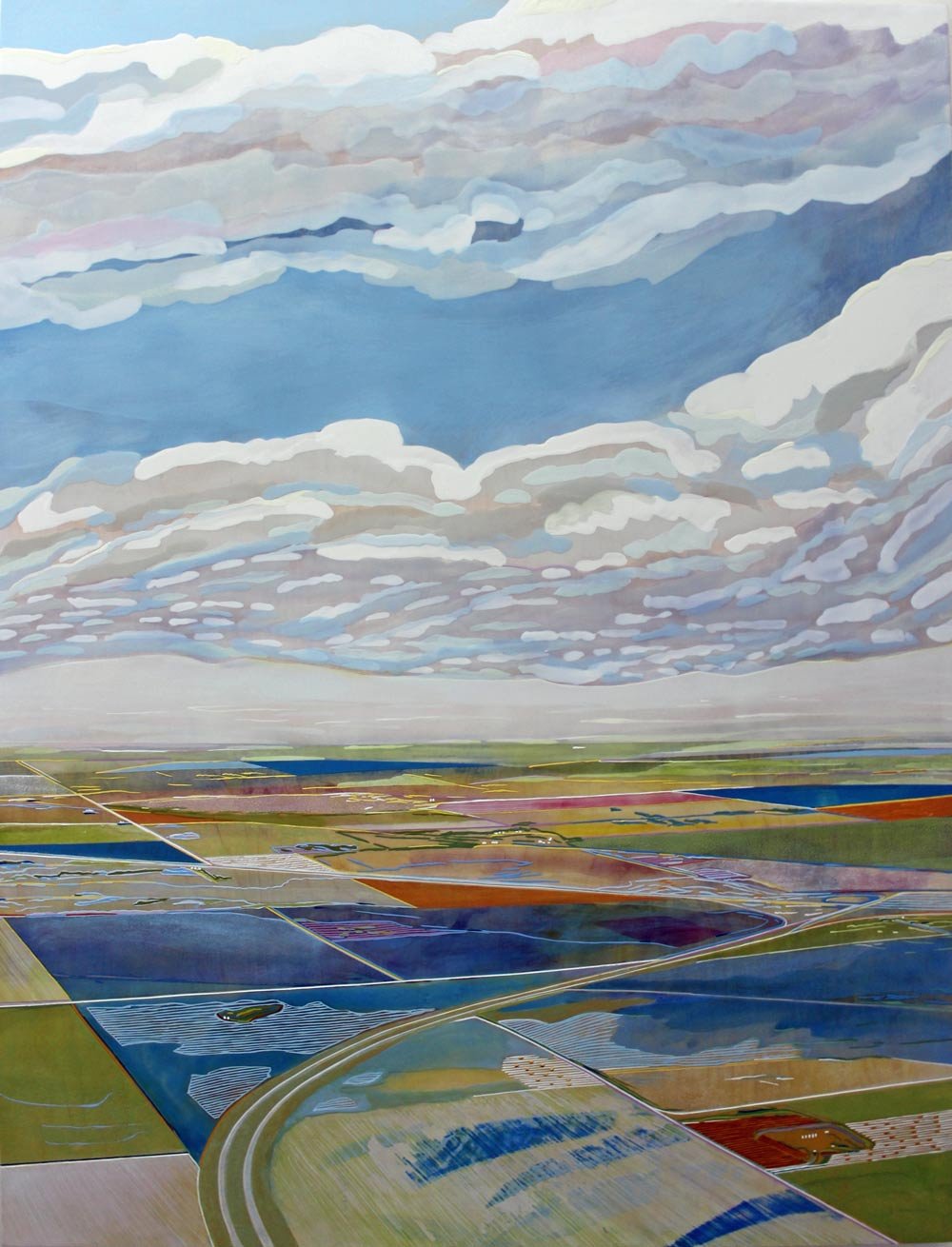

















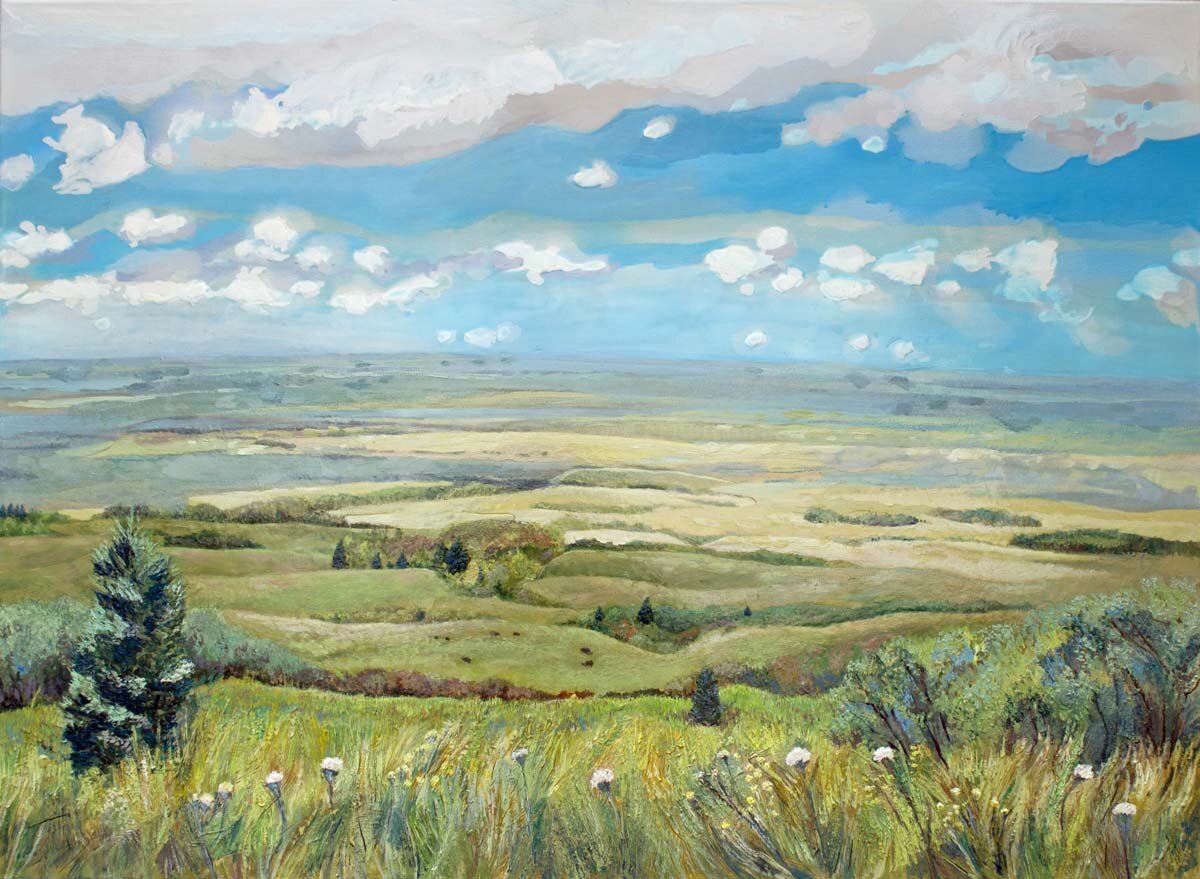
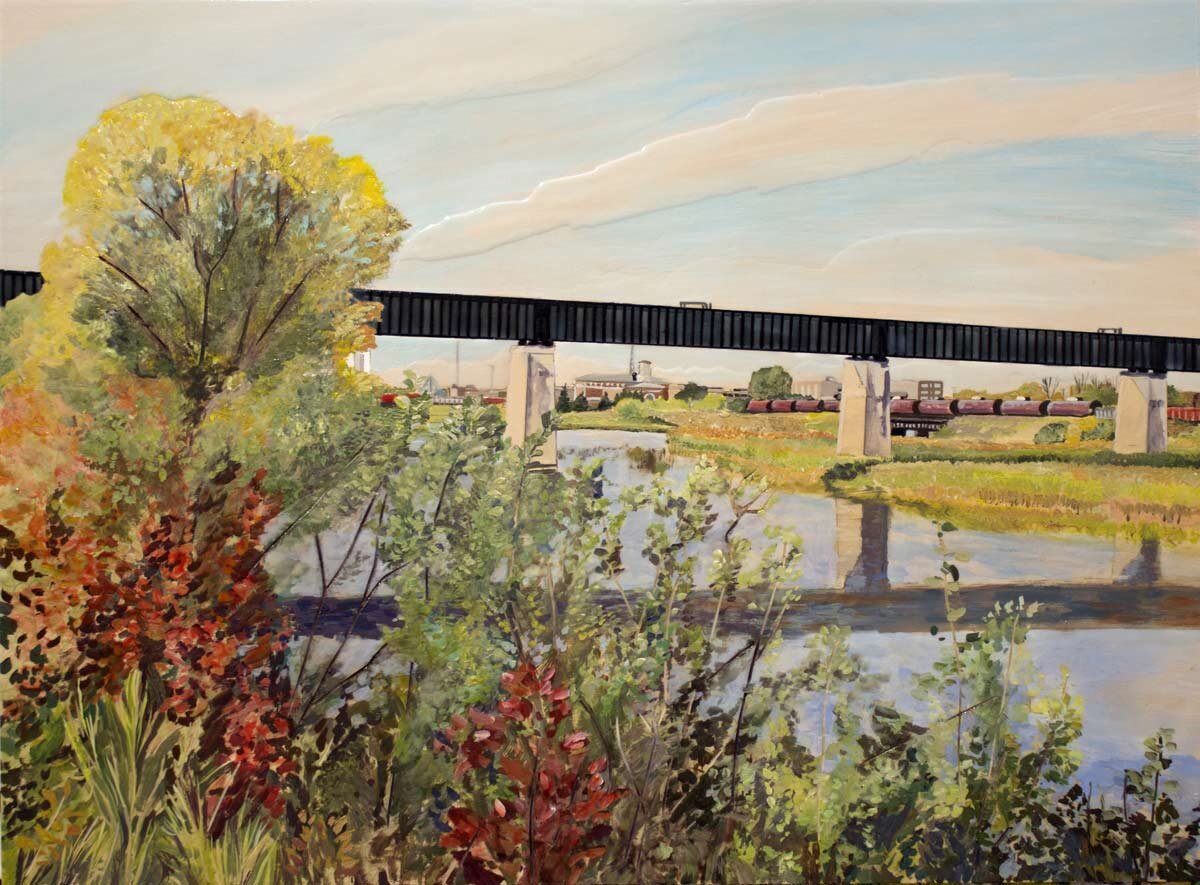
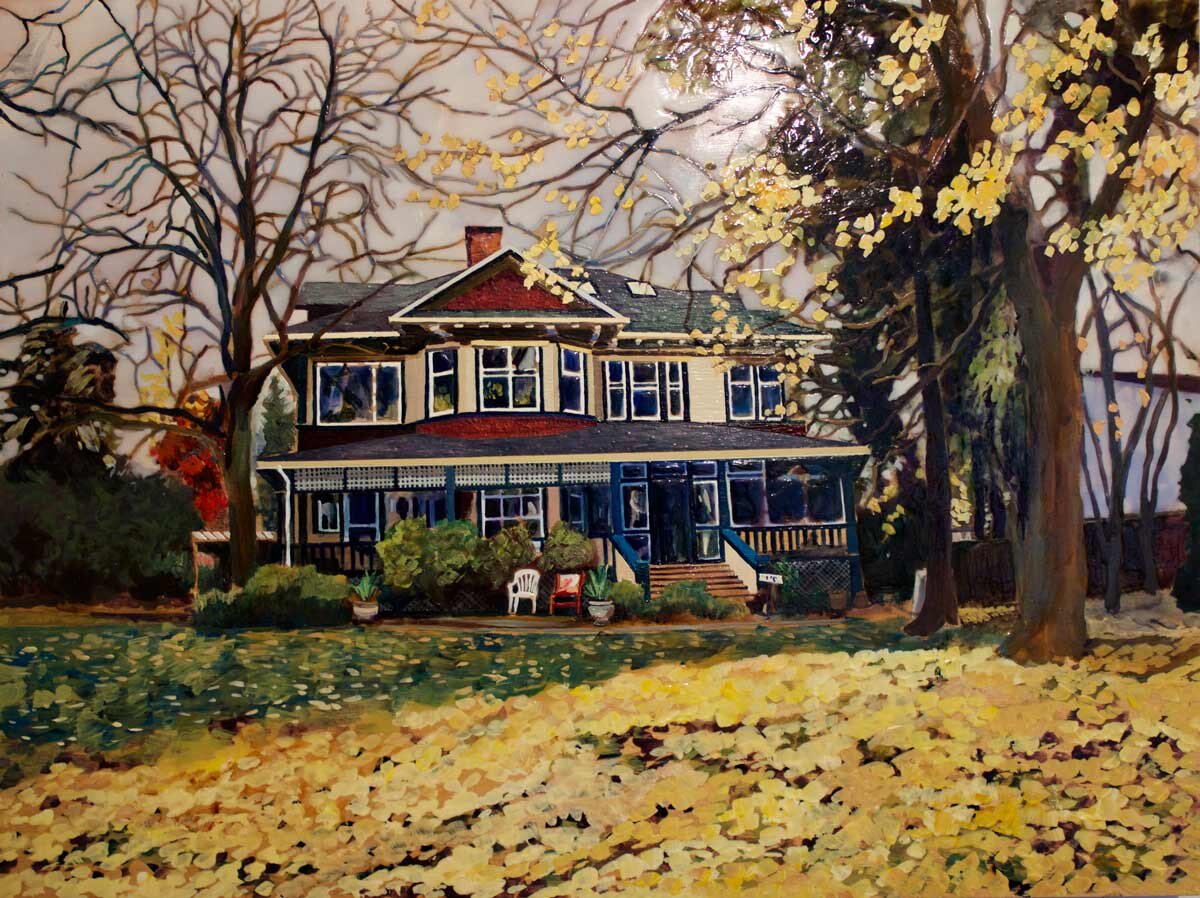
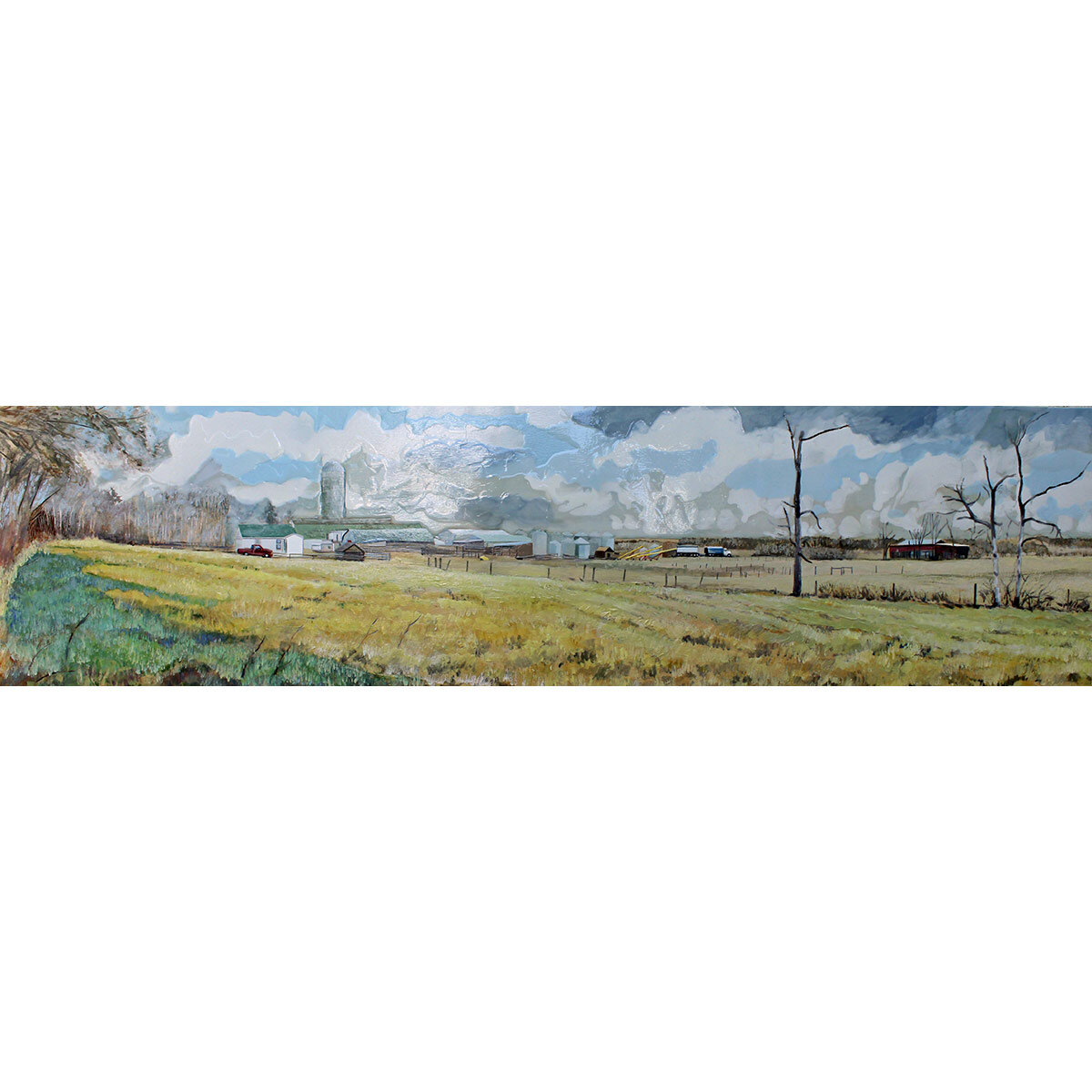
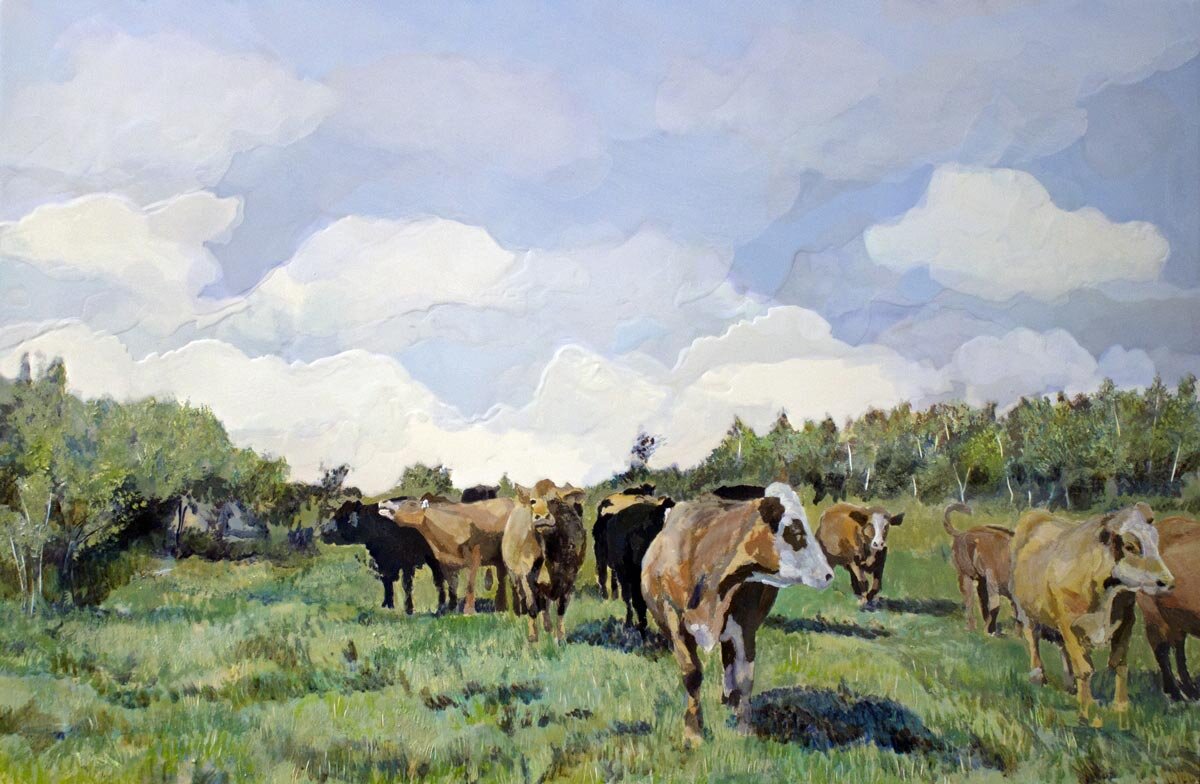
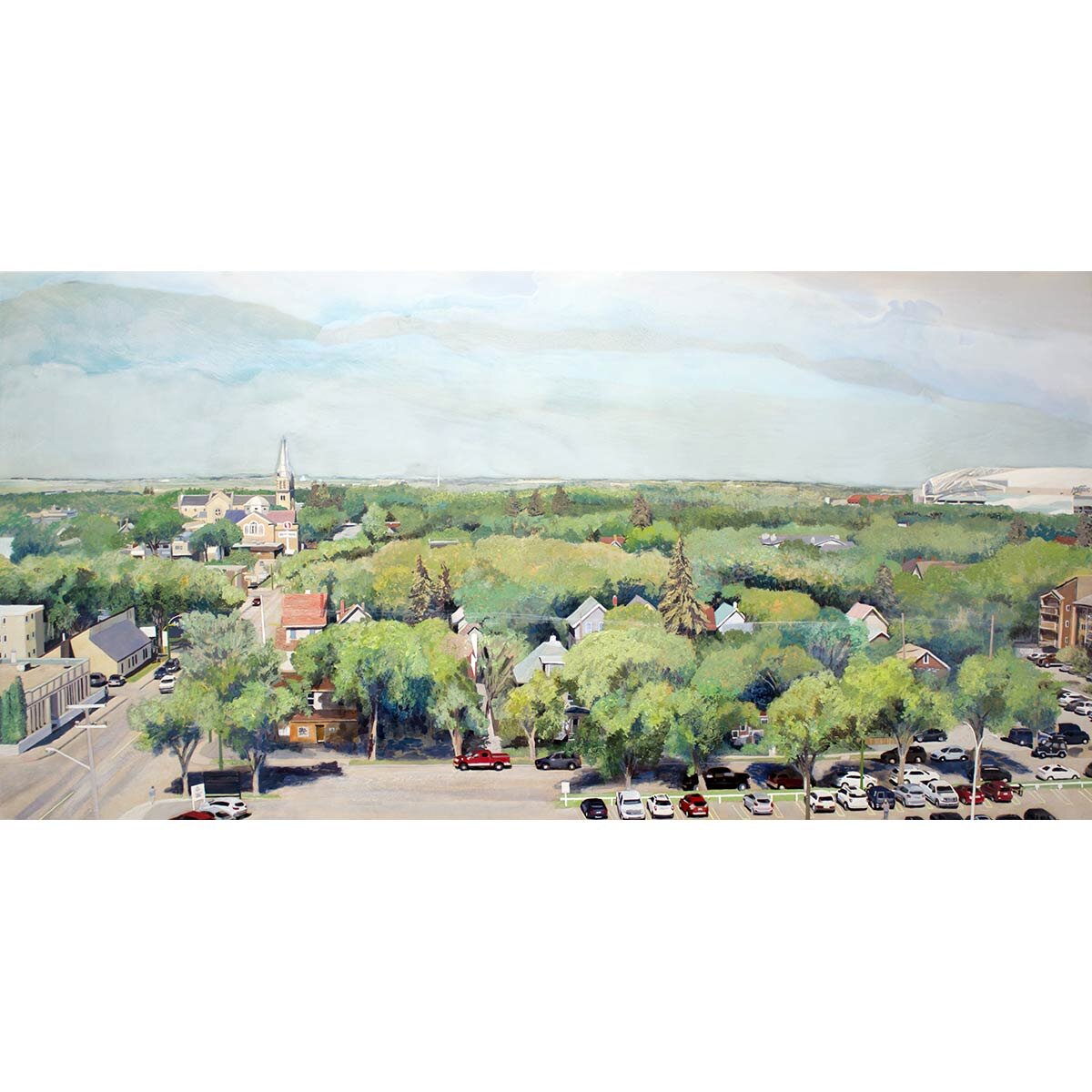

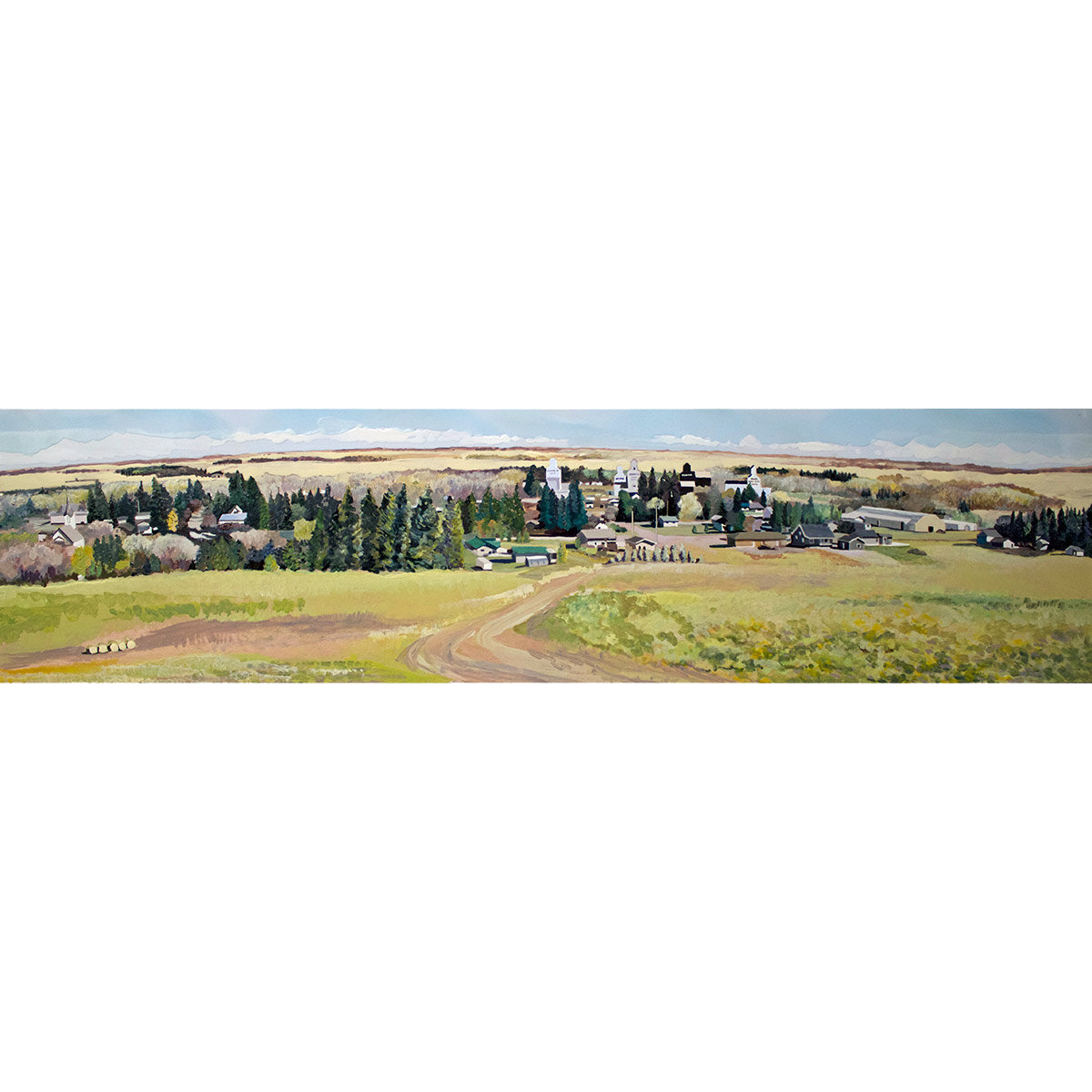
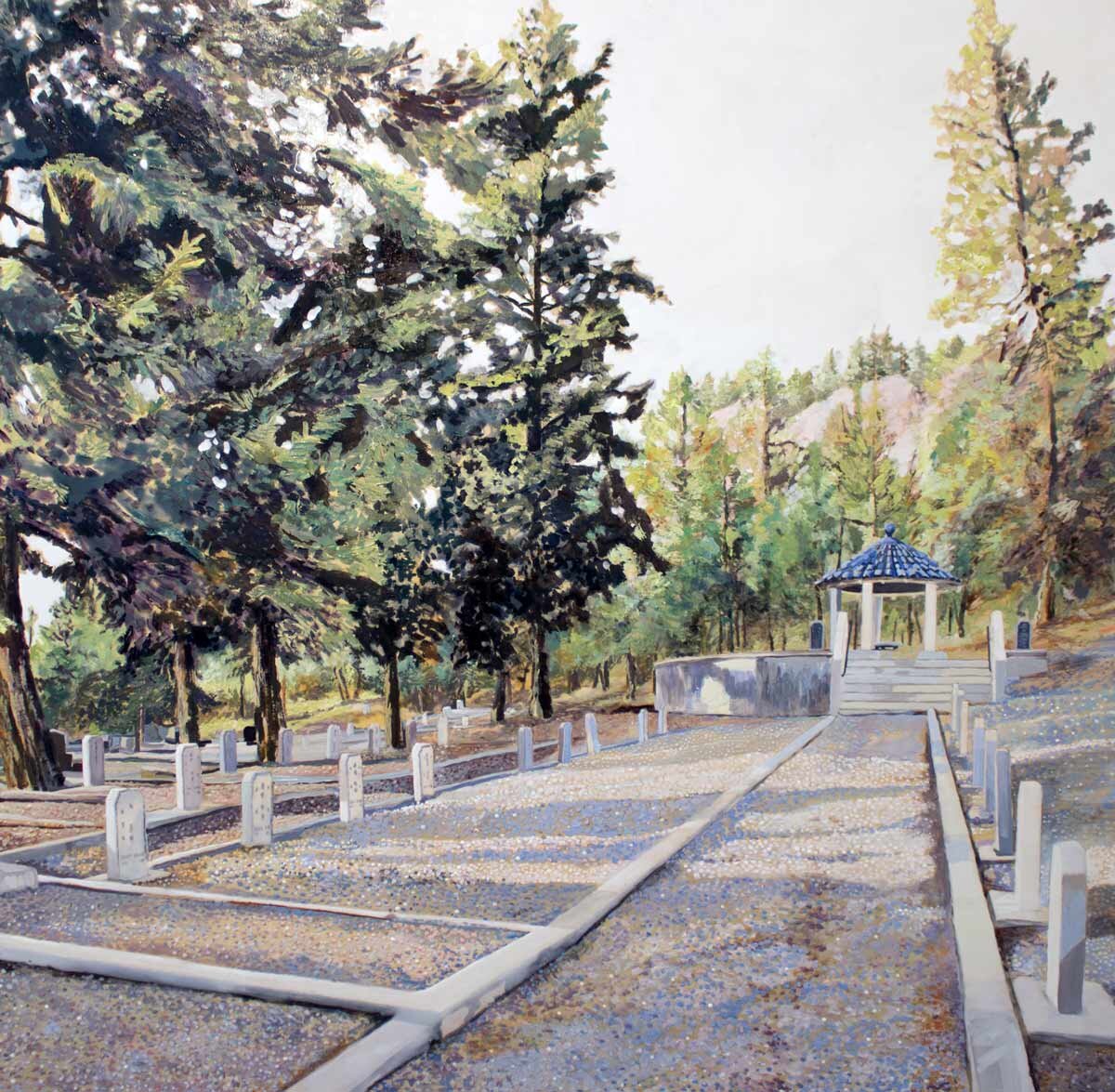
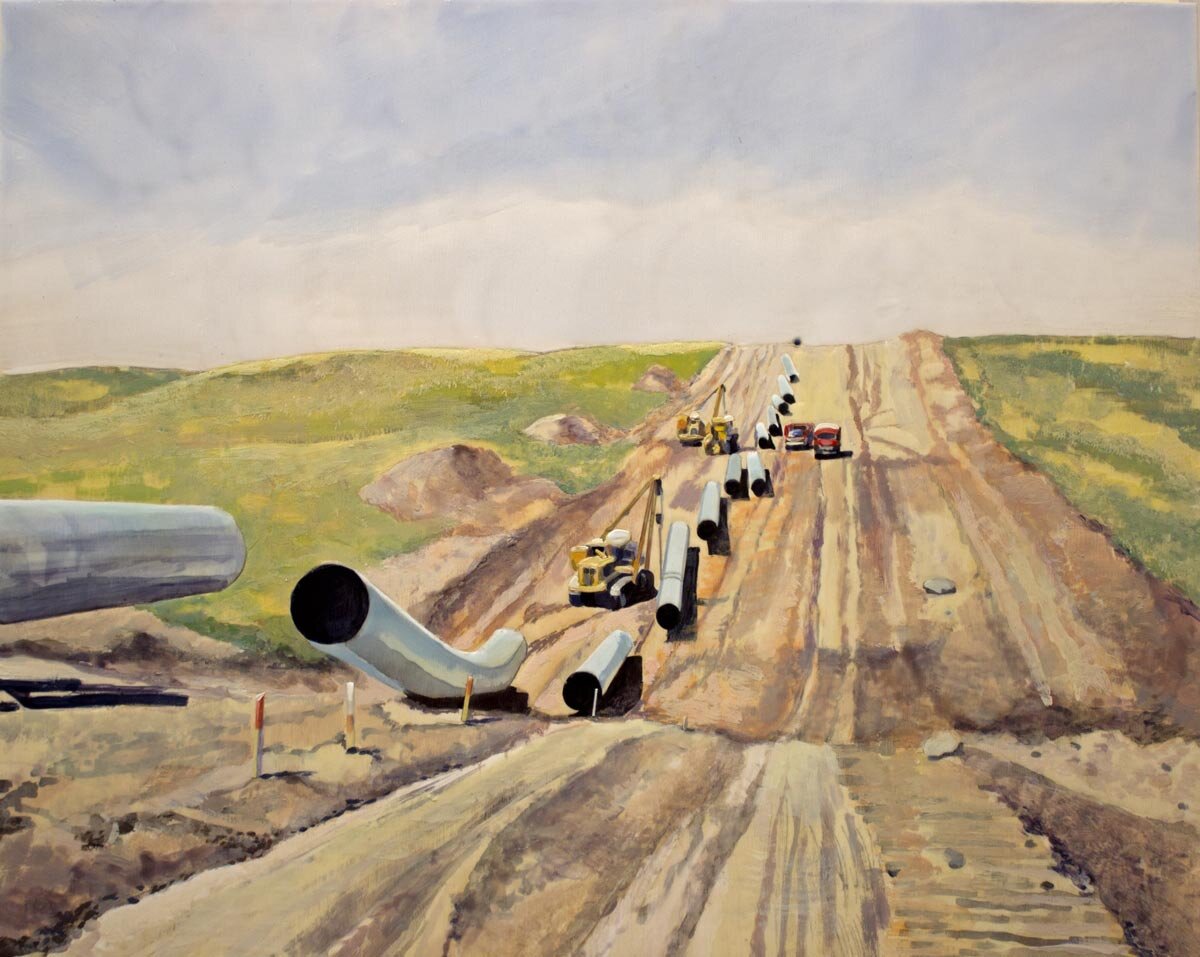
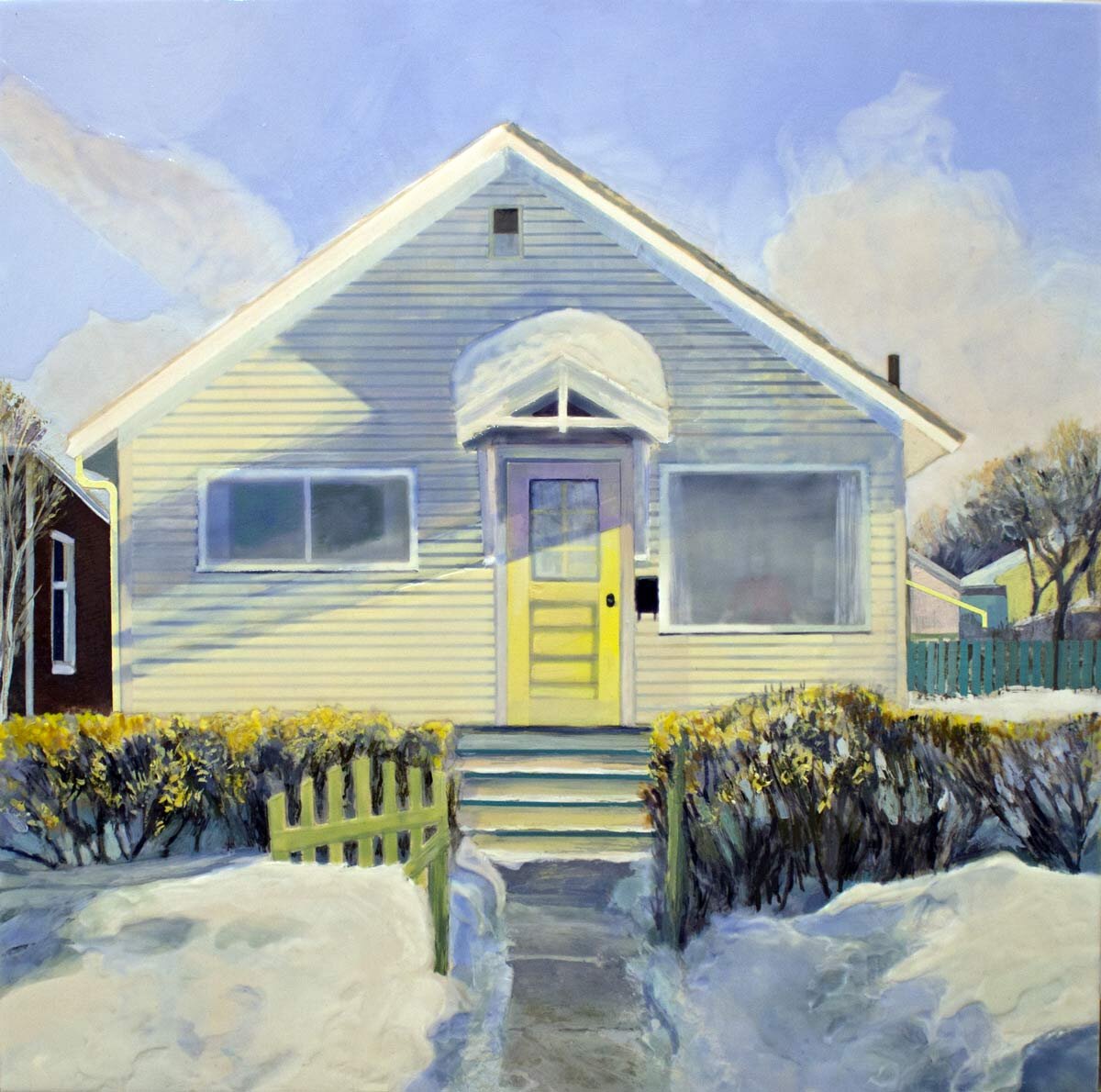
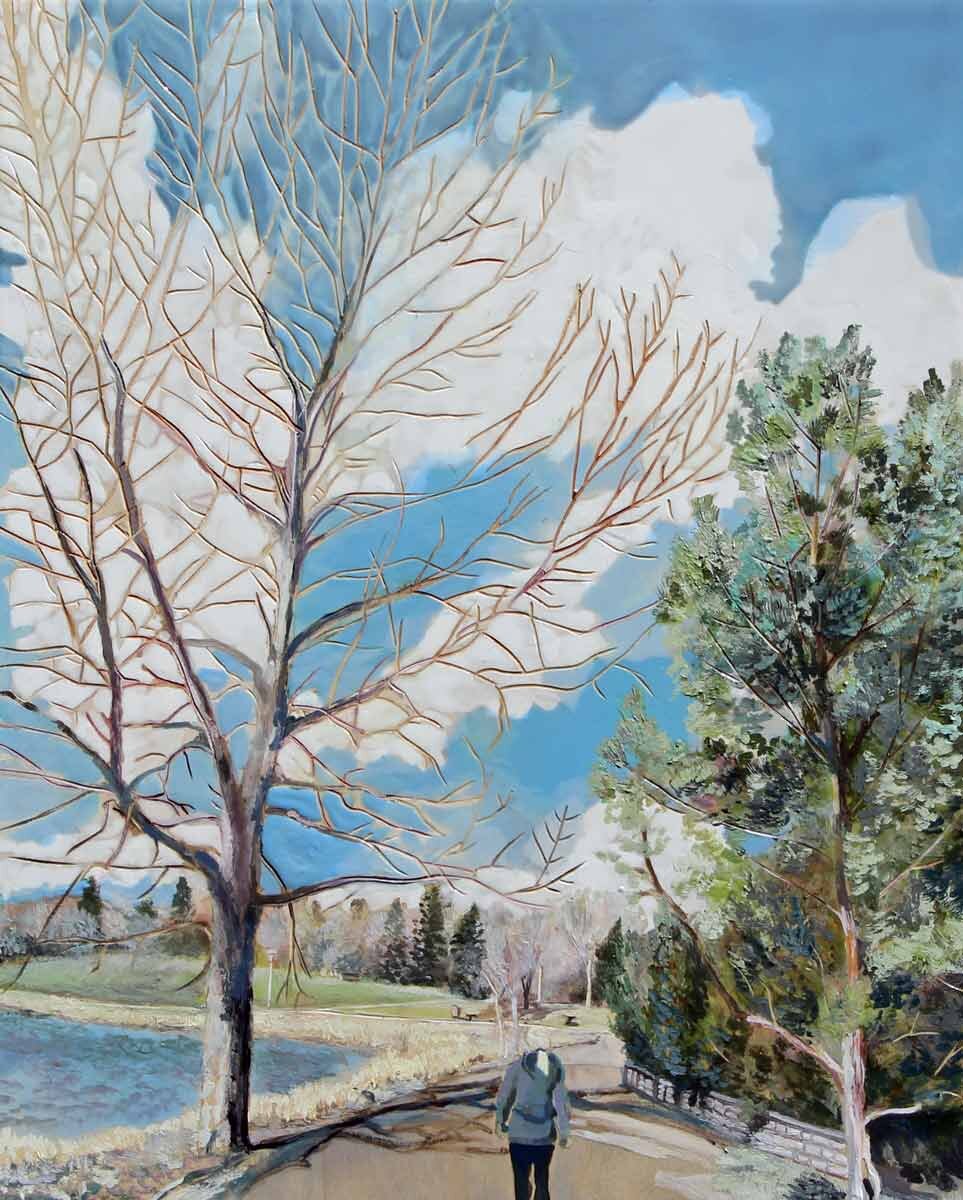
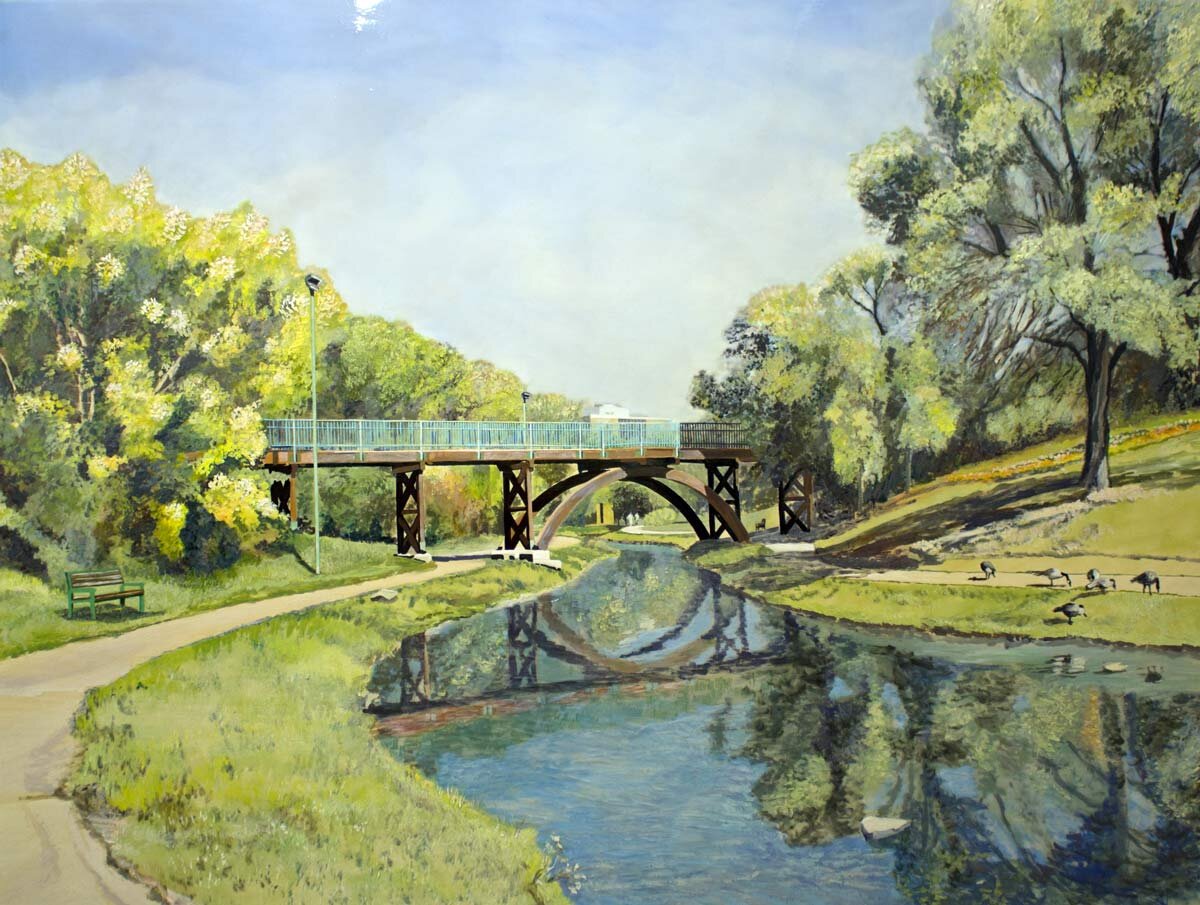
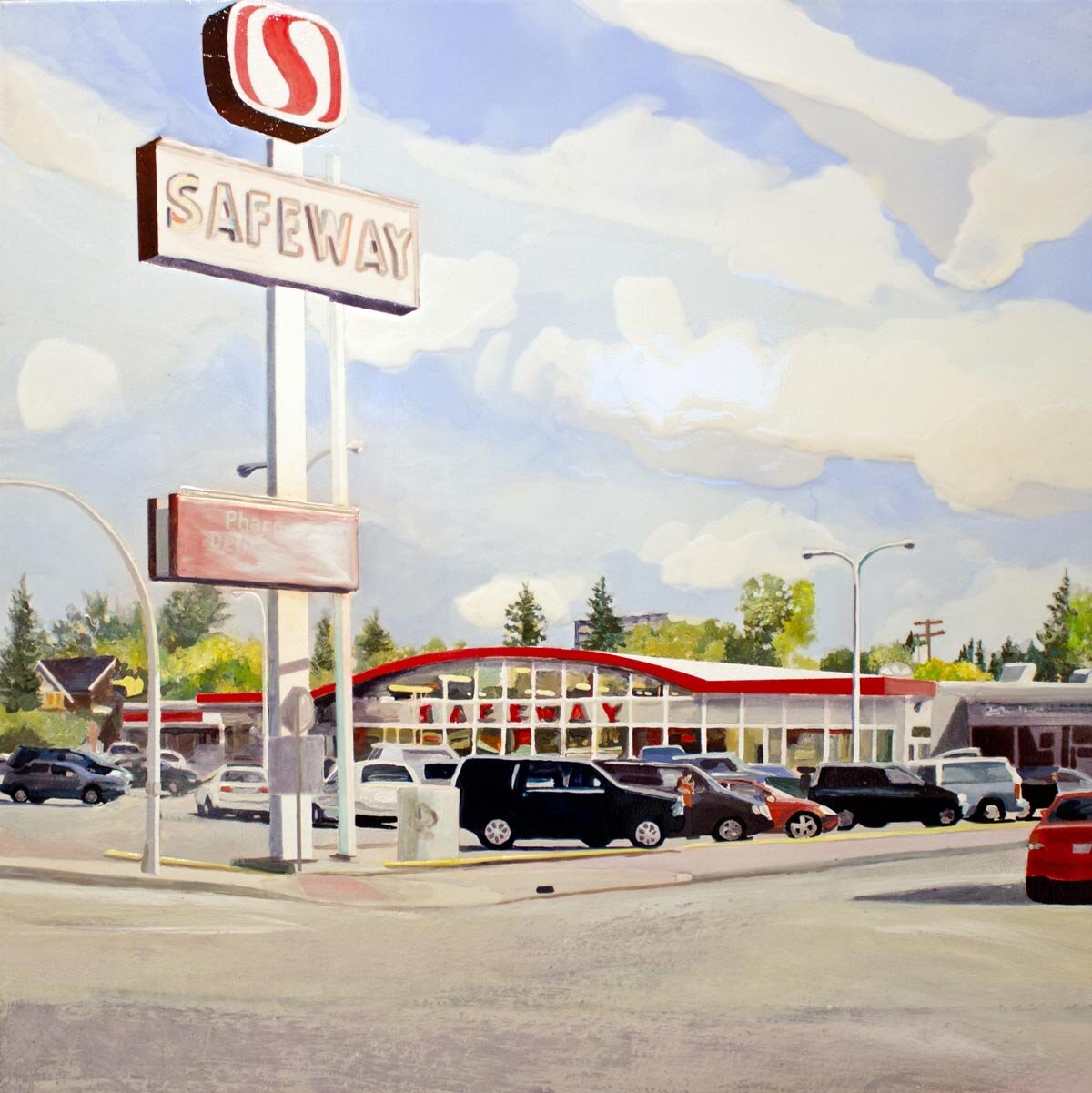


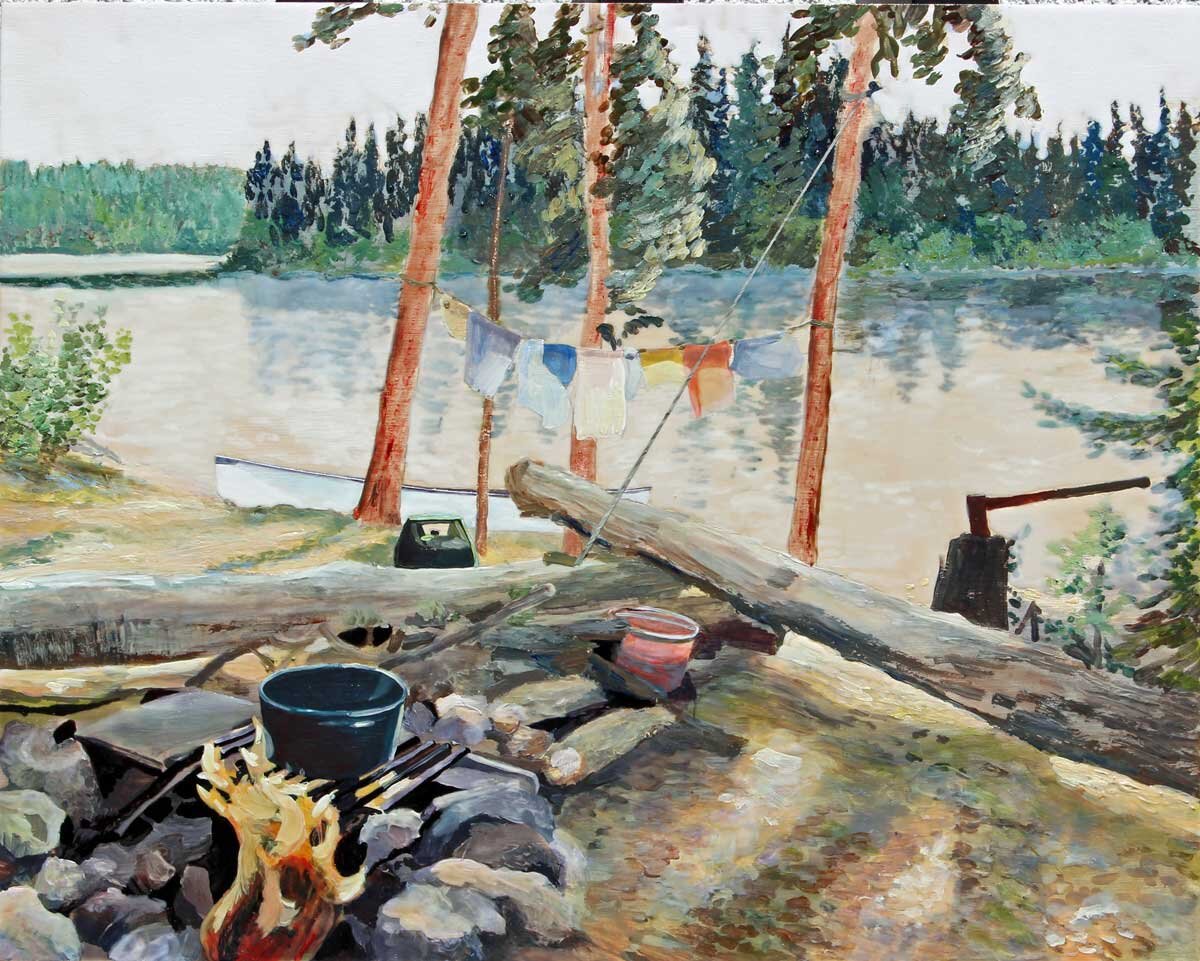
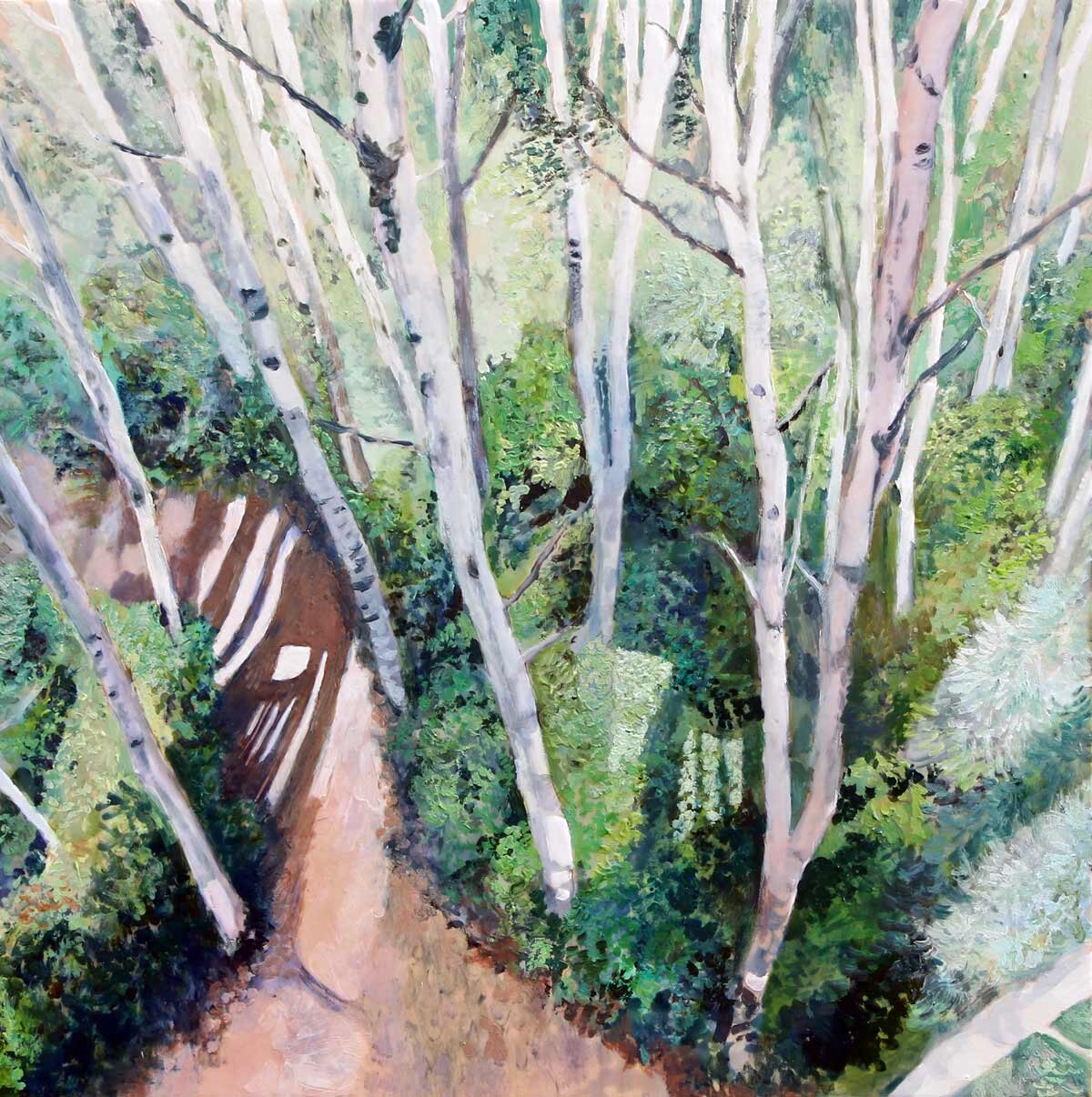
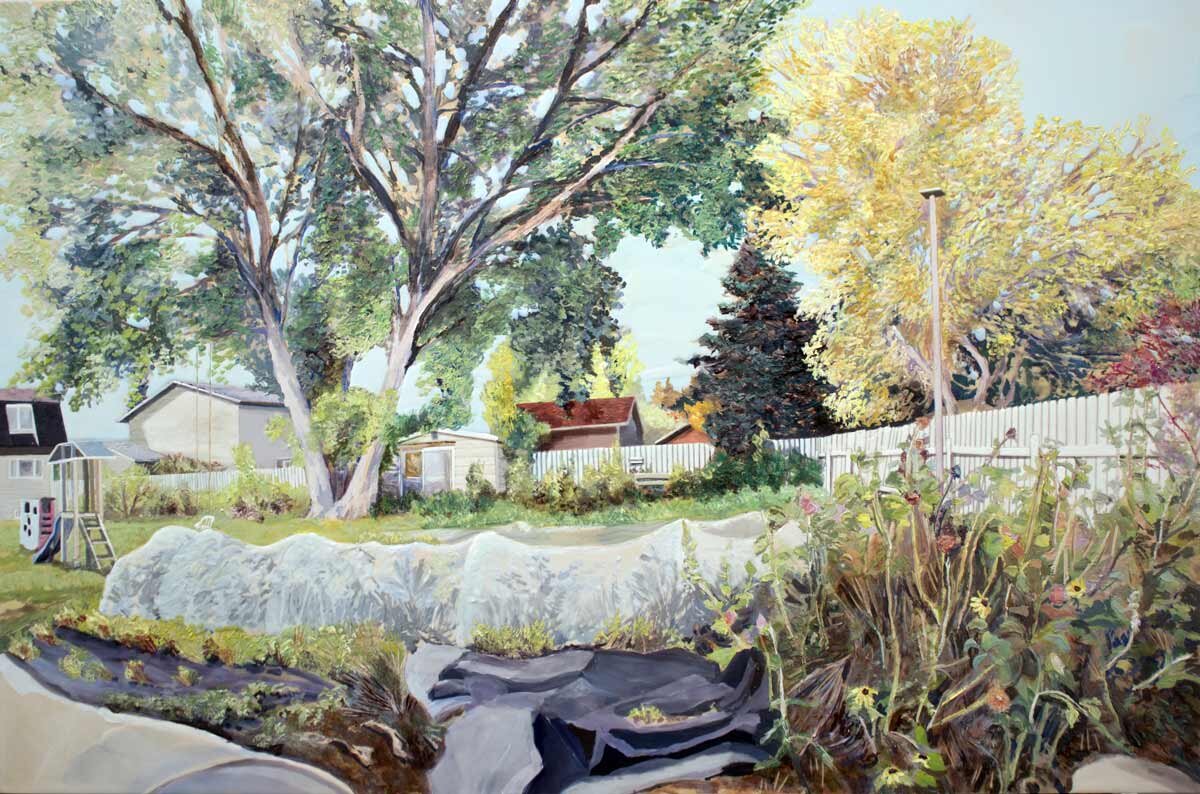
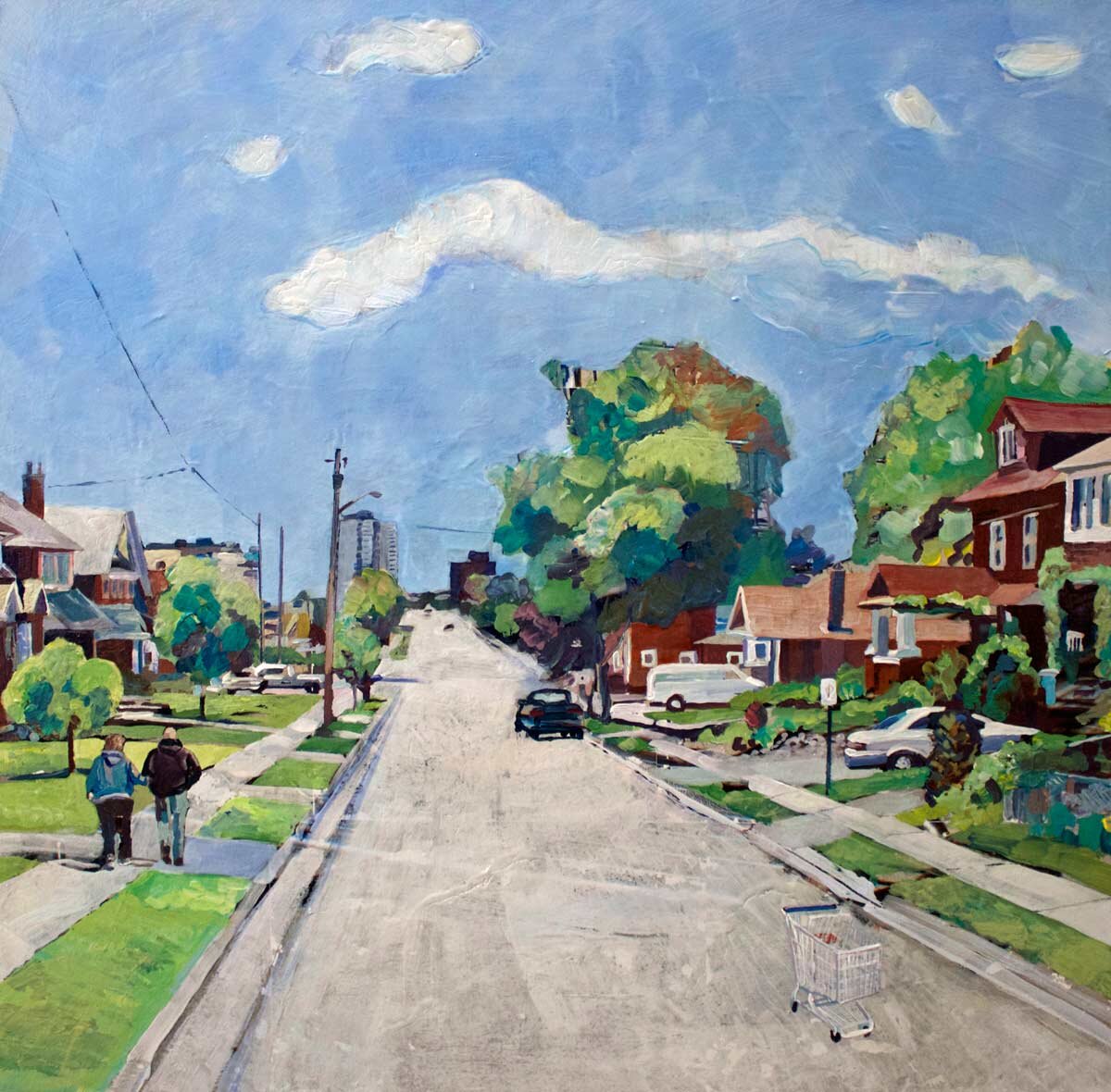
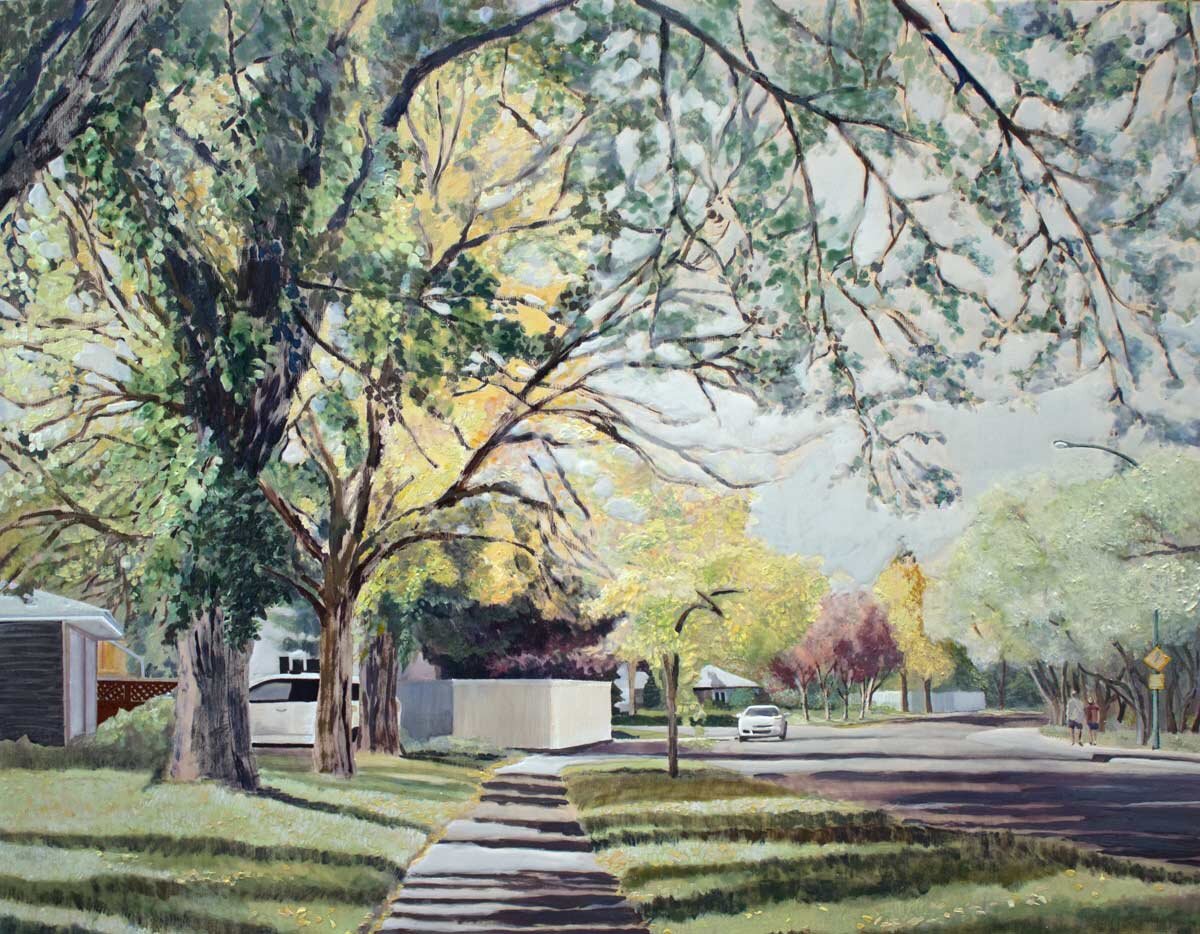

























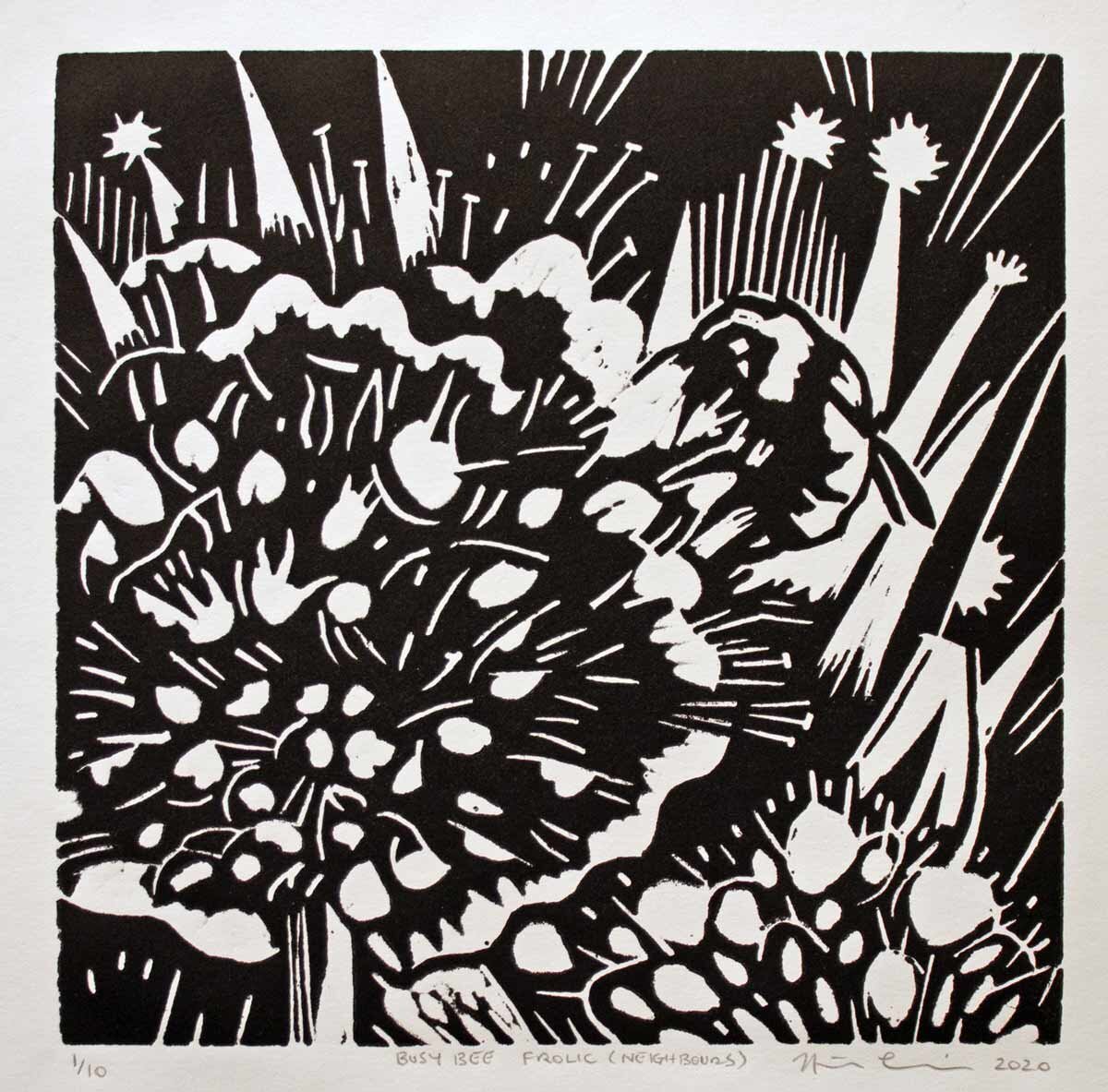
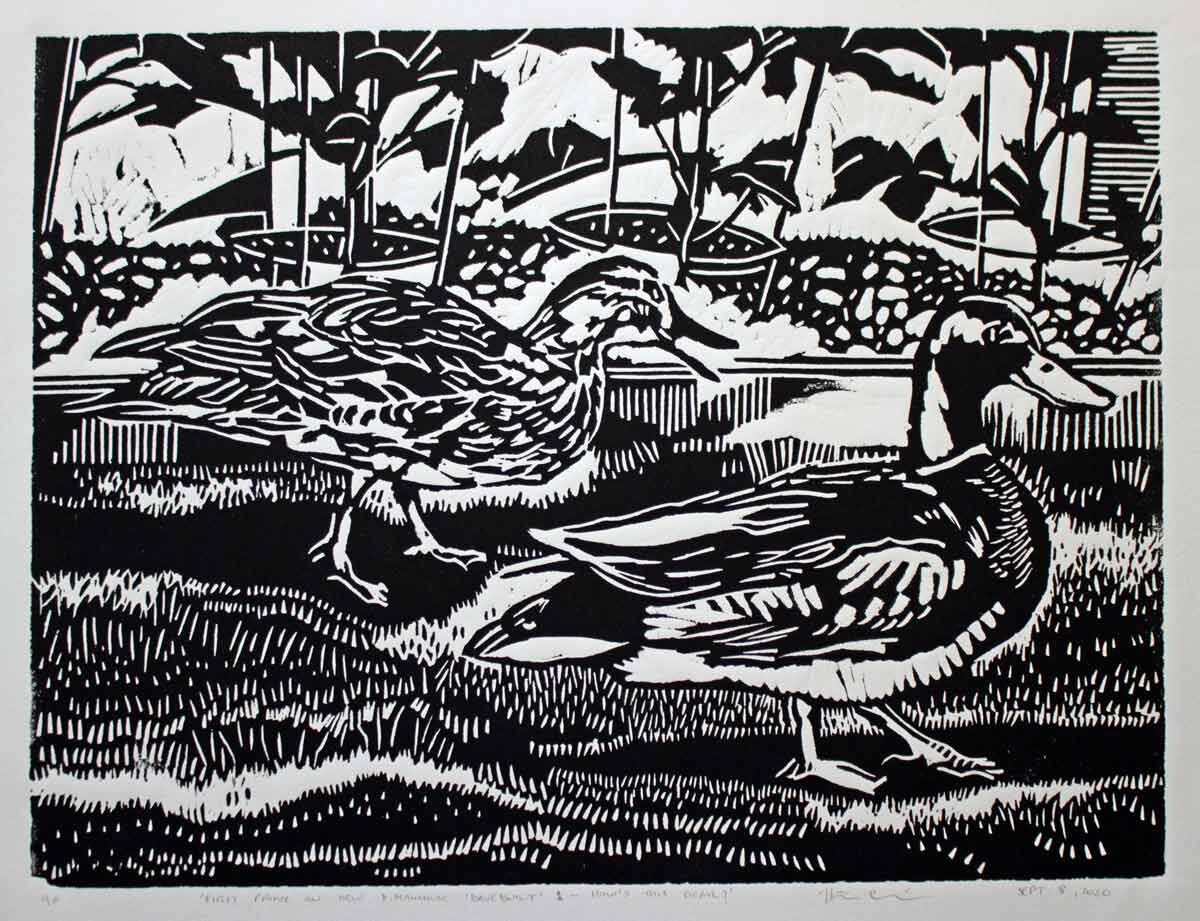







































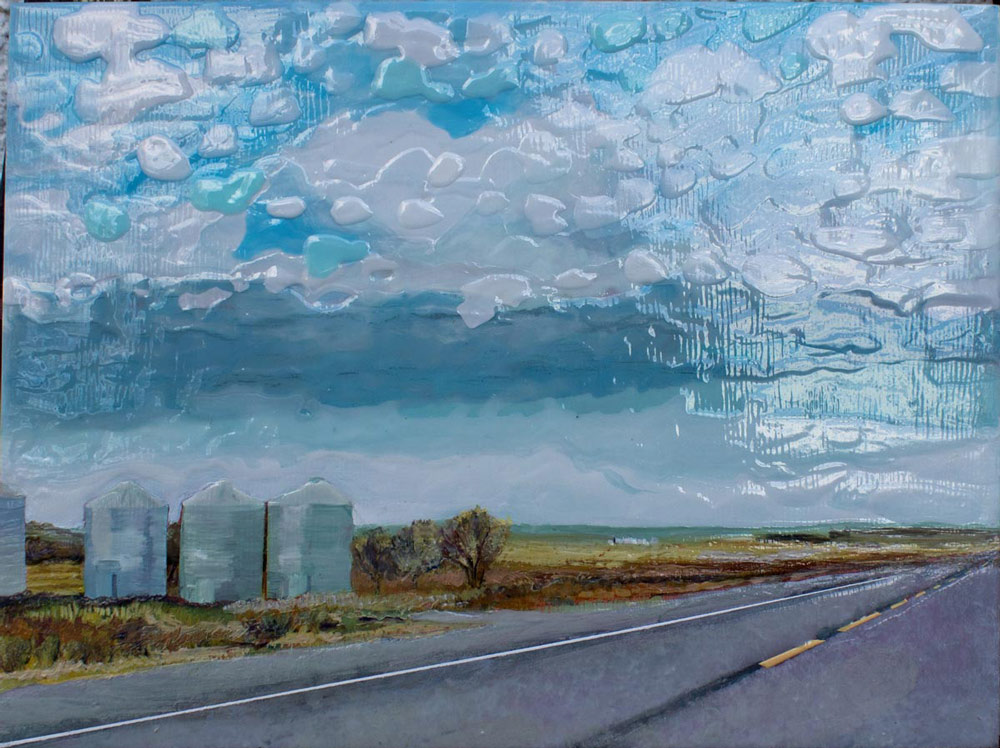





































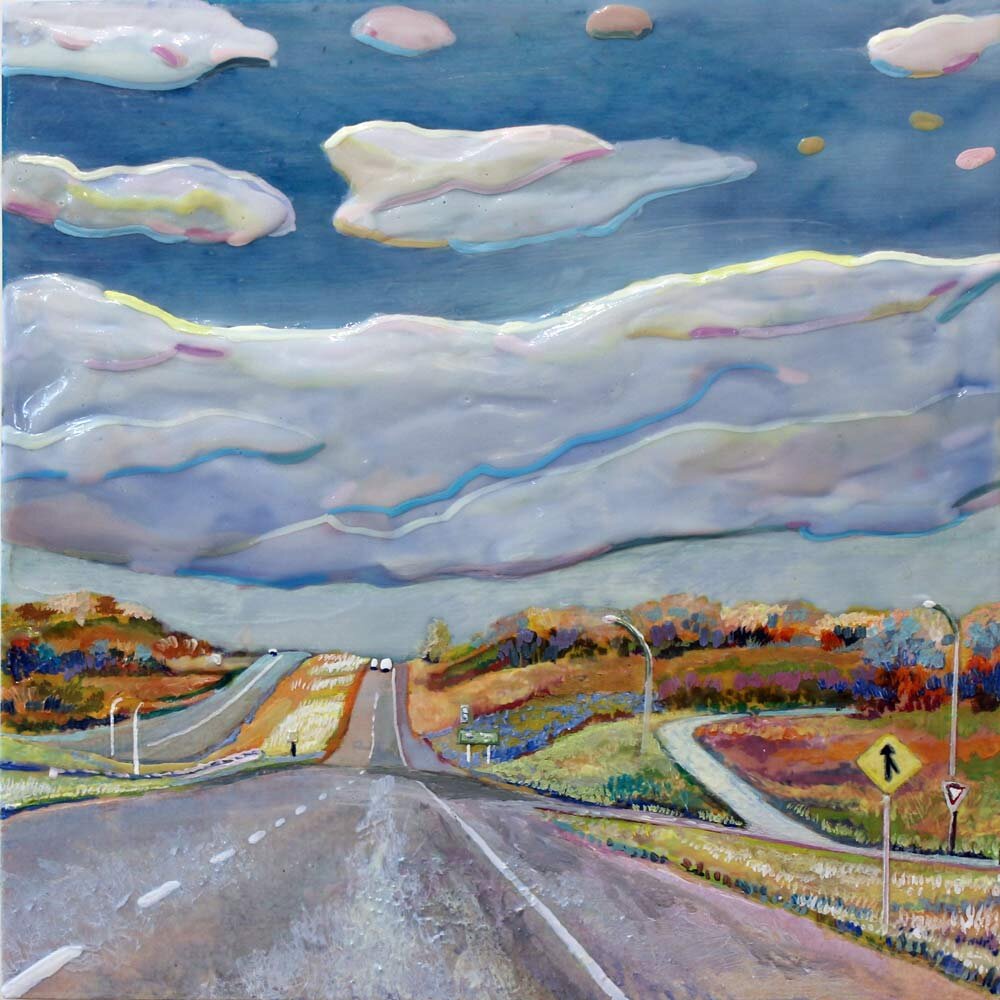














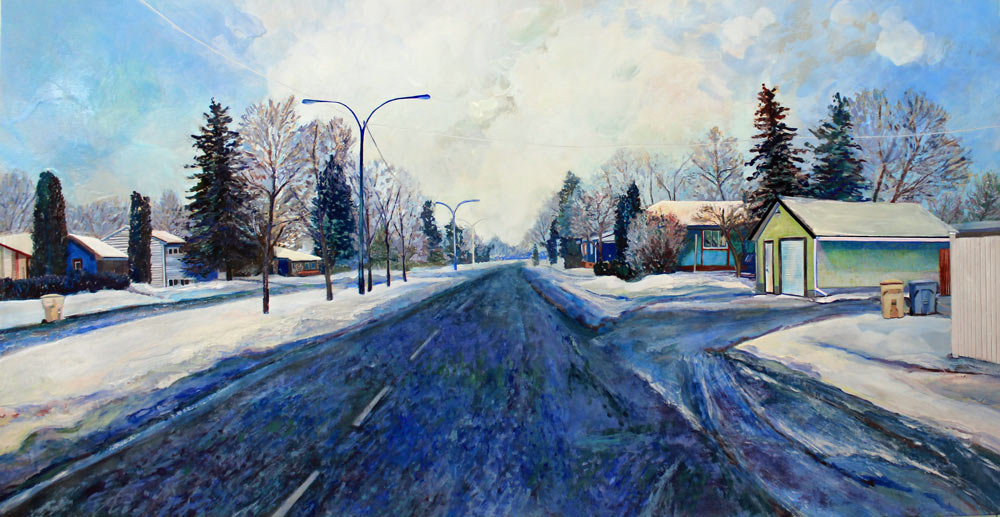

















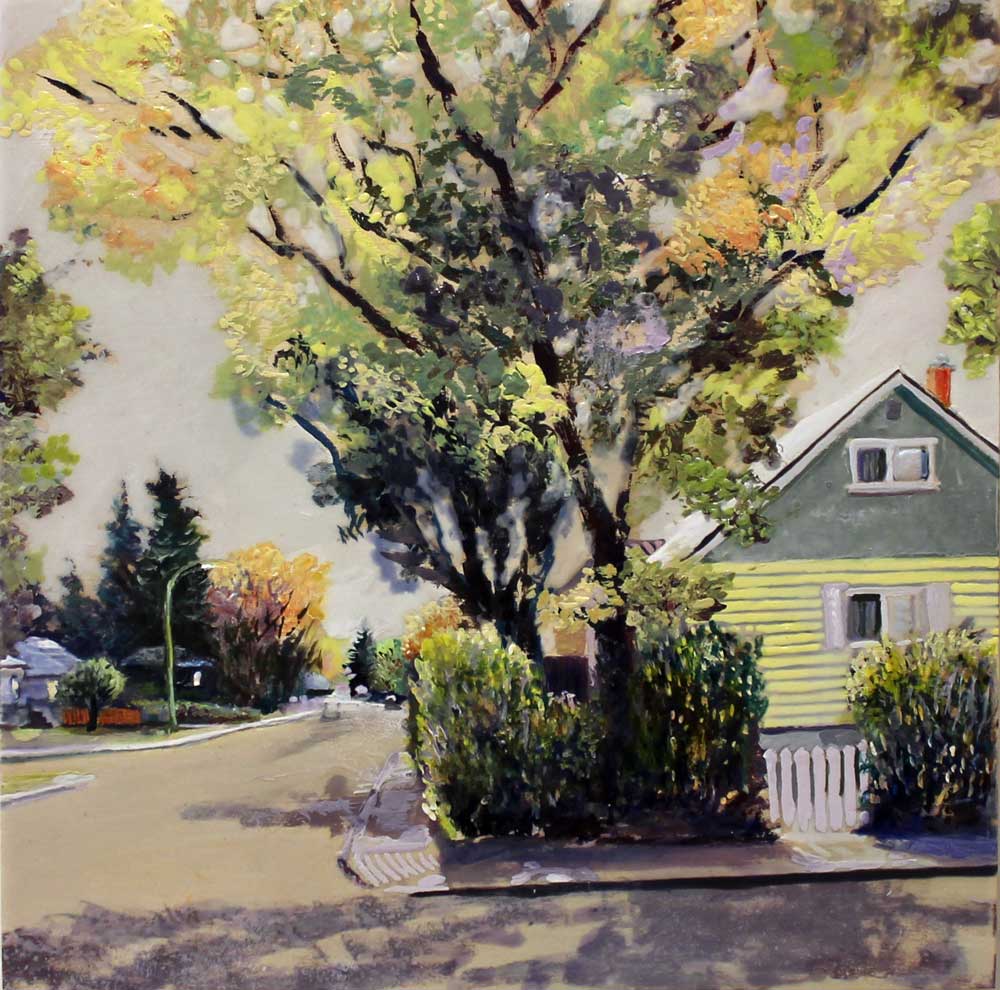































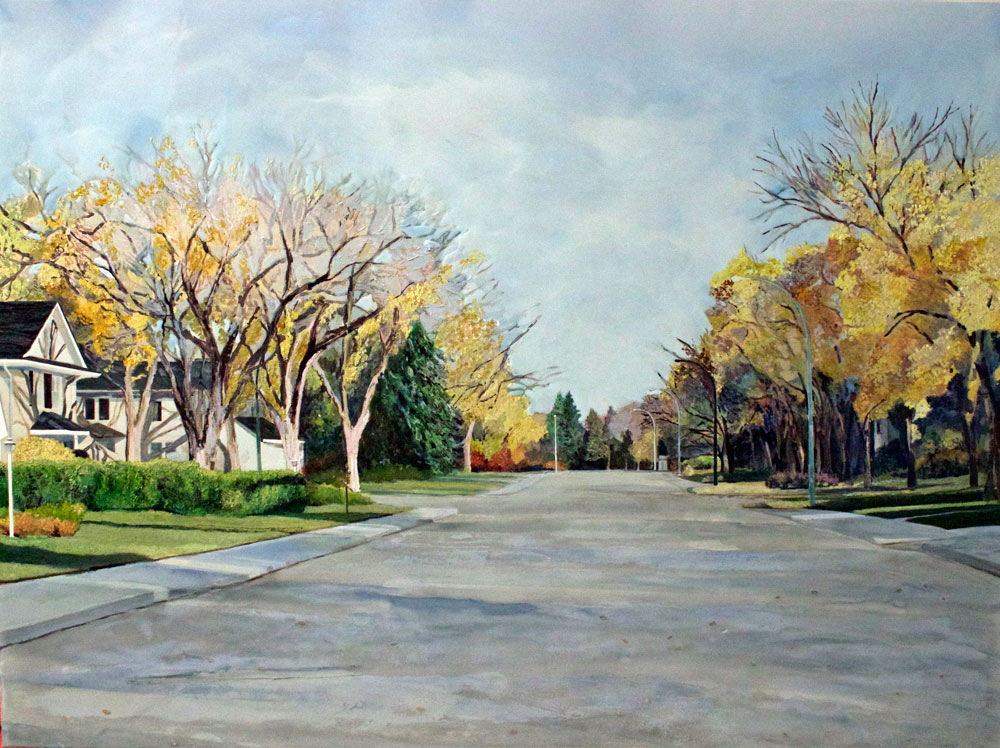


























































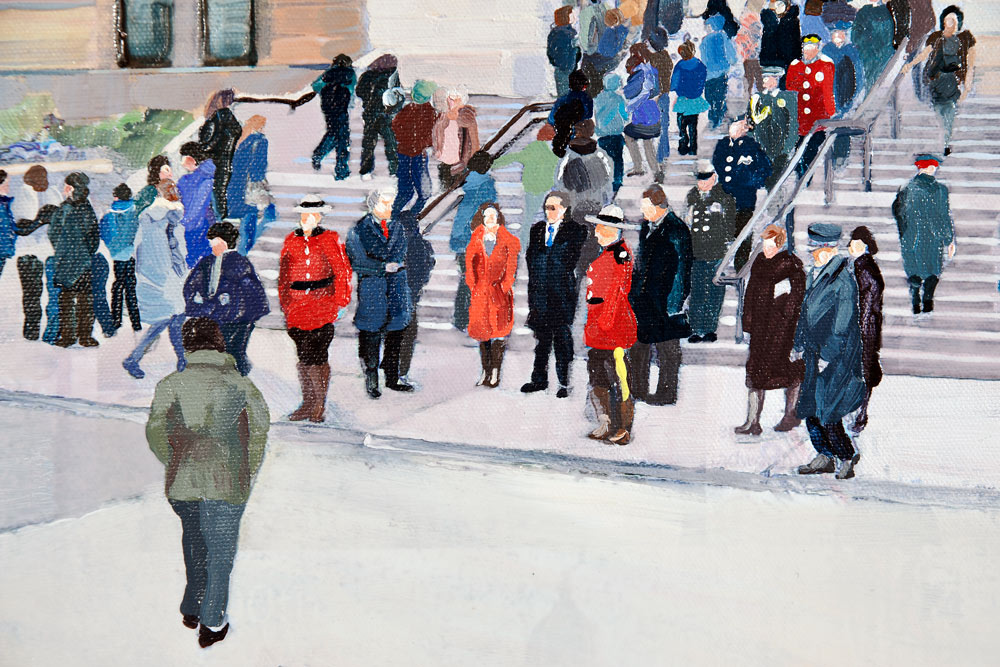
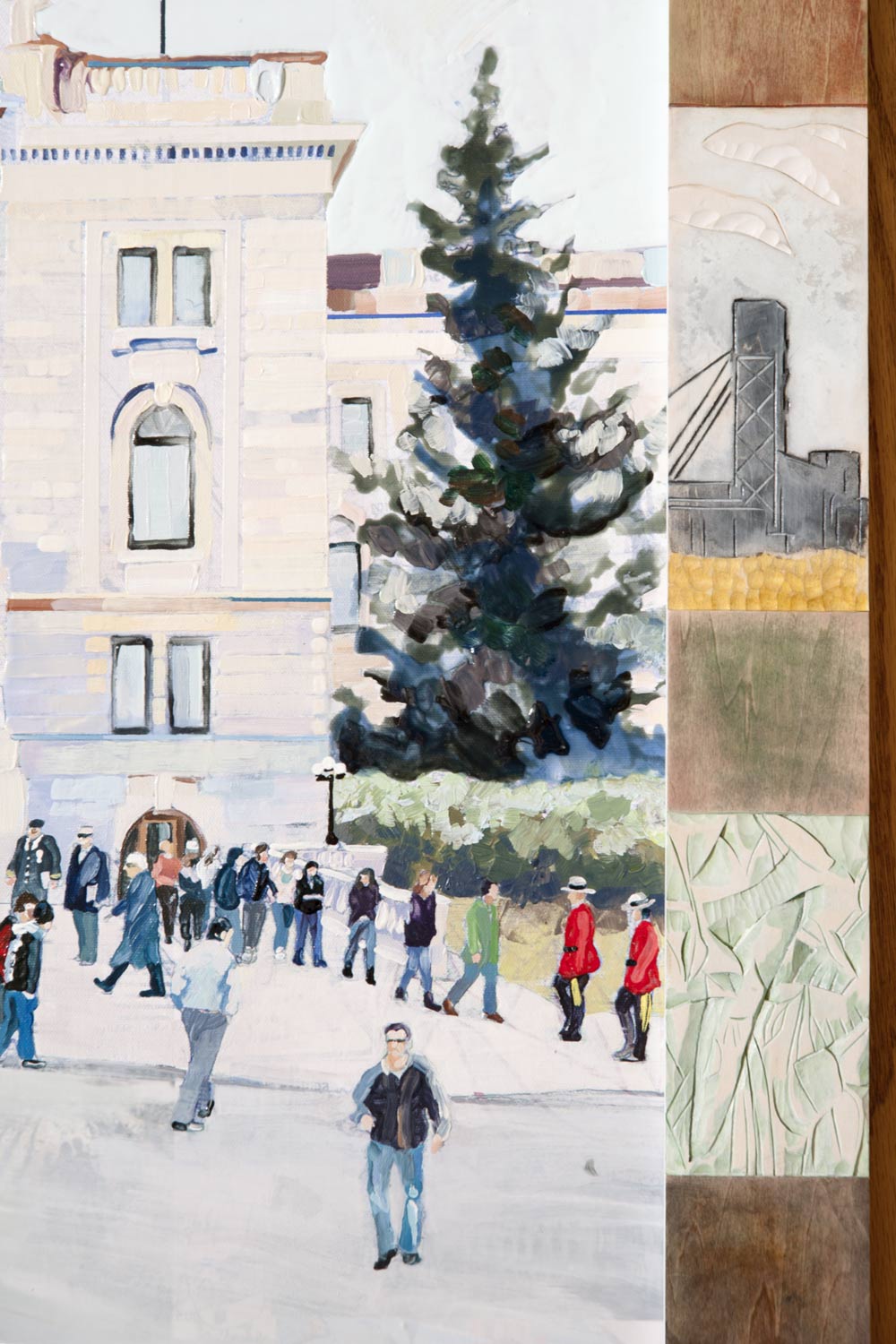















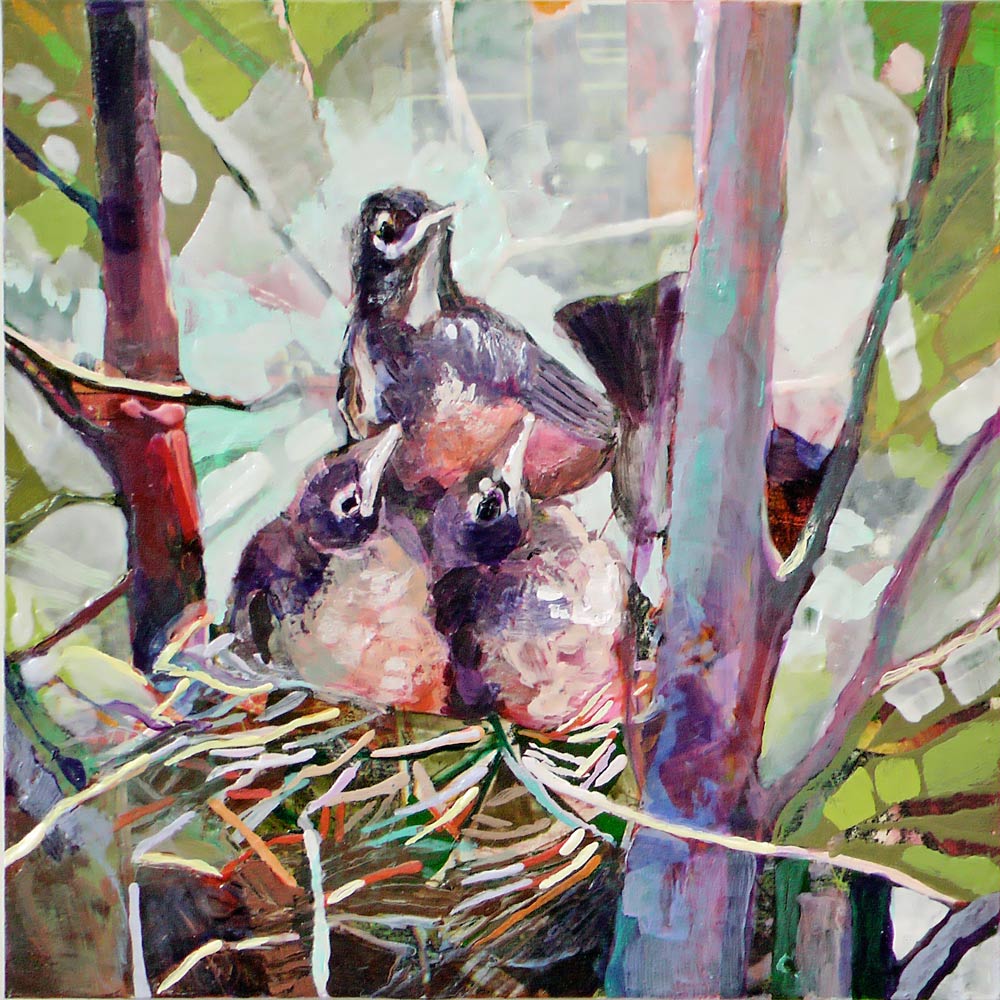




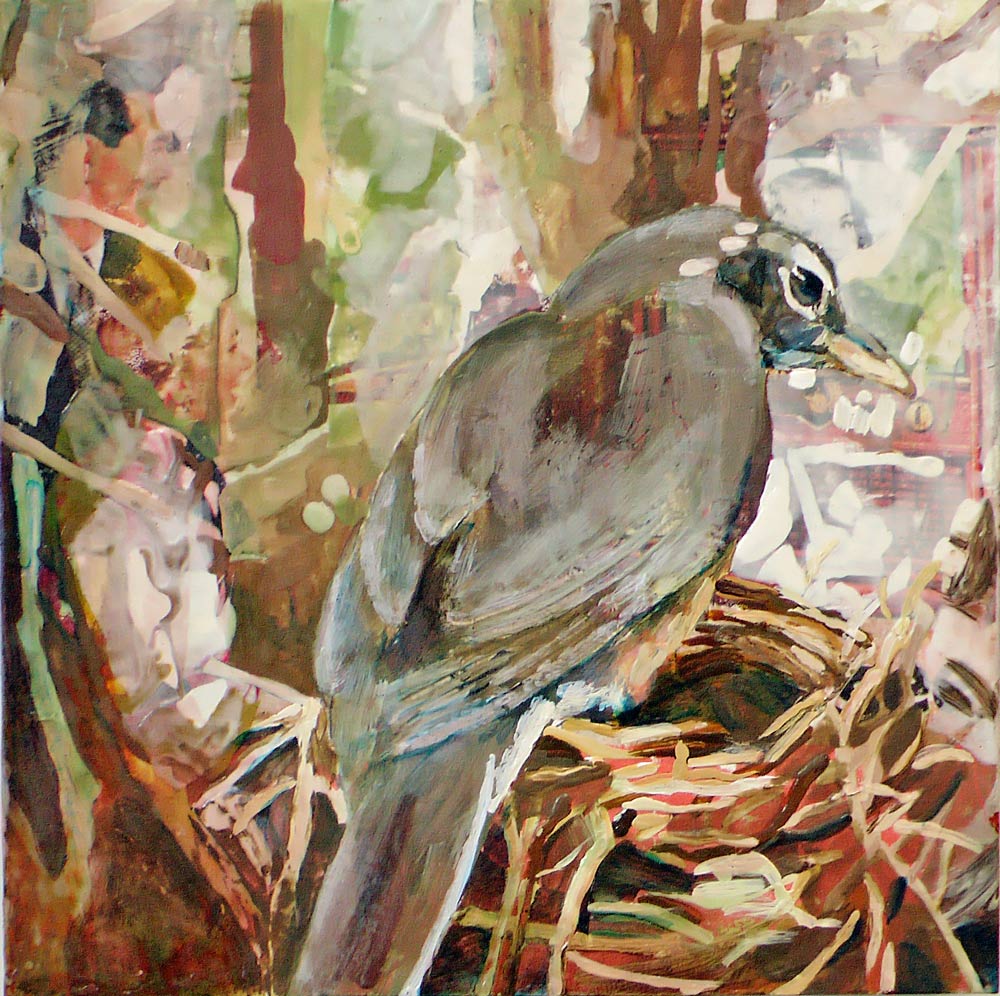






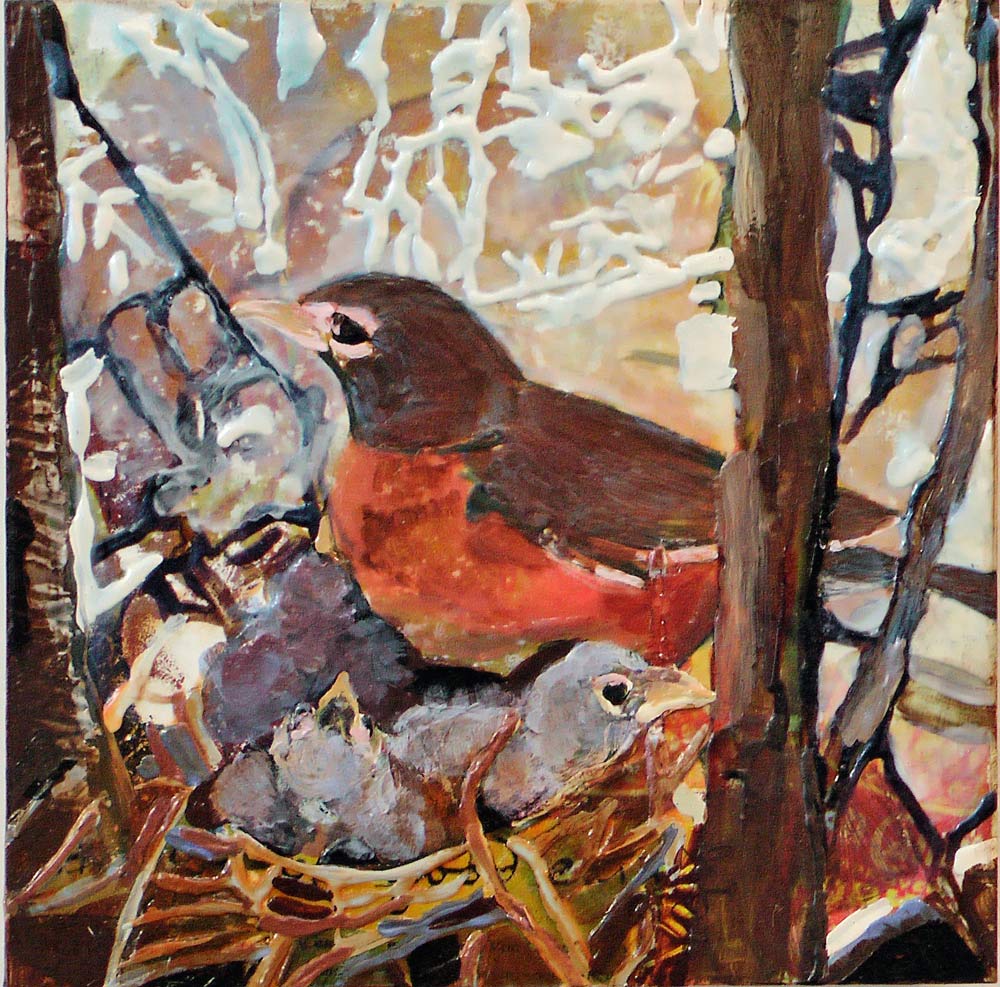
























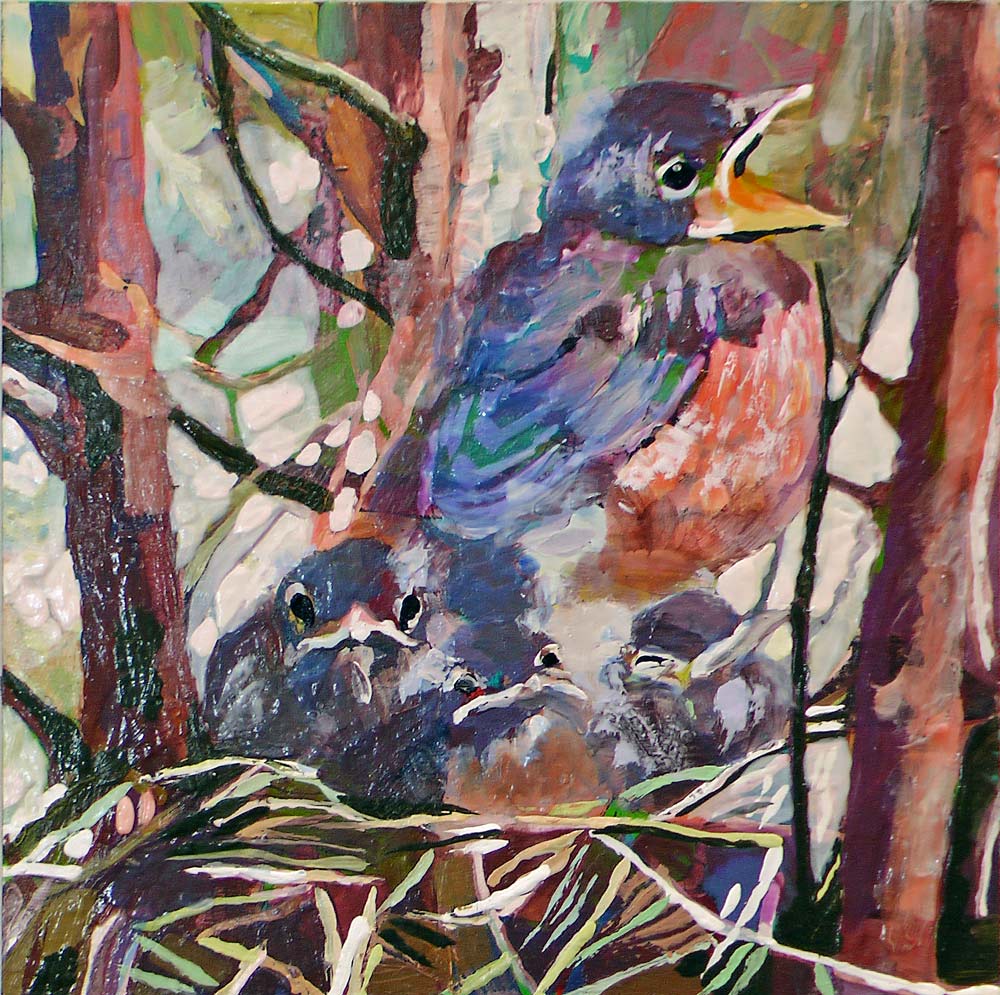















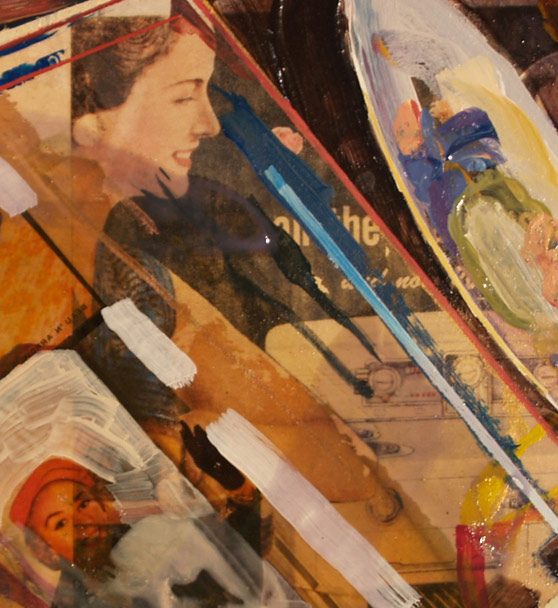






Landscape painting in Canada has frequently been dominated by work less rooted in human geography; exploring the wilderness and generally downplaying the human reconstruction of the western prairies. John Prine was whispering in my ear as I started the dashcam series, placing the roadway firmly in the center of these artworks. Casting the viewer as the main character in a journey through the landscape altered by but not contained by human intervention. The works vary in size, exploring how shifting scale contributes to the visual impact. All the works feature acrylic paint layered on panel.
The series uses multiple layers of paint, often combined with carving and sanding, reworking the surface, literally reconstructing the landscape. I hope that this process of building up the surface of the artwork translates into how people experience the paintings, as the layers and shifts in the surface texture slowly are revealed over a longer period of contemplation. As the work progressed, I started to remove certain elements concentrating on placing the carefully delineated structure of the roads and signage in contrast with the loose dense painting of the landscape. Emulating some of the inherent contradictions in human interaction with our environment.
I strive for these works to be emotive paintings, rooted in physical journey but trying to build on the poetic nature of simple life experience. Geography as metaphor, with the acknowledged influence of the many writers, musicians and artists who have explored the rich terrain of our passage through the landscape.
And then in the spring of 2020 journeys suddenly became infrequent, as we all grappled with the necessary changes created by the COVID 19 pandemic. As the weeks of reduced city traffic continued, I started to observe changes in my environment. Local wildlife started to openly dominate my surroundings, brazenly travelling the local roadways and freely carousing throughout the neighbourhood. I started to ponder the importance of animals as portents in classic stories, religion and literature. The result is a body of work entitled Neighbours.
This is a series of block-prints that feature the animal visitors that I observed from my studio. It is a playful attempt to cast the animals in the role of portents, the imagery is simple and generally open ended. The work was created in the context of our current situation of a world-wide pandemic and on-going environmental crisis. I believe that the animals provide a moment of hope and perhaps wisdom in their ready adaptation and celebration of freedom in the midst of human crisis. Their behavior, perhaps, showing us all a pathway forward.